Introduction to Pediatric Dental Care
The Importance of Early Dental Care
Early dental care is crucial for children, starting as soon as the first tooth appears. Establishing dental visits by a child's first birthday helps detect potential problems early and promotes lifelong healthy habits. Early checkups allow pediatric dentists to monitor oral development and prevent common issues like cavities, which affect more than half of children aged 6 to 8.
Overview of Pediatric Dental Care Benefits
Pediatric dental care focuses on preventive treatments, including regular cleanings, fluoride applications, and sealants, which protect against tooth decay. These steps support strong teeth and healthy gums while reducing anxiety through child-friendly environments and engaging techniques. Restorative treatments, such as crowns and fillings, are also available to preserve dental health when problems arise.
Role of Pediatric Dentists
Pediatric dentists specialize in caring for children’s oral health using strategies tailored to young patients. They create welcoming and fun settings, communicate using kid-friendly language, and apply behavior management techniques to ease fears. Their expert guidance helps parents develop preventive routines, ensuring children's teeth are protected as they grow.
Children's Pediatric Dental Care: Key Facts
- Experts recommend scheduling children's first dental visit by their first birthday to detect issues early.
- Twice-yearly dental checkups are essential for preventing cavities and gum disease as children develop.
- Dental sealants are protective coatings that prevent about 80% of cavities in molars.
- Restorative care like fillings and crowns repair damaged teeth, maintaining proper function and alignment.
- Early oral hygiene habits should start from infancy by cleaning gums, and brushing begins when the first tooth appears.
- Fluoride treatments, including varnish starting at 6 months, strengthen enamel and reduce cavities.
- Parents play a crucial role in guiding children's dental health through supervision, education, and modeling good habits.
- Creating a child-friendly dental environment with colorful decor and positive communication reduces anxiety.
- Behavior management techniques like the S.A.F.E. method help children feel comfortable and cooperative during visits.
- Community water fluoridation and school outreach programs significantly improve children's dental health and cavity prevention.
1. Start Dental Visits by the First Birthday

Why See a Dentist by Your Child’s First Birthday?
Experts recommend scheduling your child's first dental visit by their first birthday or within six months of their first tooth appearing. This early visit helps detect dental problems like cavities and infections before they become serious. Learn more about the First Dental Visit by First Birthday and the Benefits of Early Dental Visits.
Importance of Early Detection and Prevention
Regular visits starting early allow dentists to monitor oral health development, helping prevent issues such as tooth decay and gum disease. Early care supports strong, healthy teeth as your child grows. For detailed guidance, see Importance of Regular Dental Checkups for Children and Preventive Pediatric Dental Treatments.
Establishing a Dental Home
Creating a consistent dental care relationship early builds familiarity and trust, making future visits easier and promoting lifelong good oral health habits for your child. Explore more on Establishing a Dental Home for Children and Child-Friendly Dental Care in Shreveport.
2. Regular Dental Checkups: Twice Annually for Optimal Health

Why Are Twice-Yearly Dental Checkups Important for Children?
Regular dental visits, recommended every six months, are vital for early detection of dental problems such as cavities and gum disease. These preventive checkups ensure healthy teeth and gums in children as their mouths develop.
How Do Biannual Checkups Prevent Cavities and Gum Disease?
During these visits, dentists clean plaque and apply fluoride or dental sealants for cavity prevention to protect children’s teeth from decay. Early prevention helps avoid pain, infections, and more complex dental treatments.
How Do Regular Checkups Support Ongoing Oral Health?
Routine visits not only maintain oral health but also build comfort and trust with the dentist, encouraging positive dental habits that last a lifetime. Parents play a crucial role by guiding your child’s dental health.
Maintaining a schedule of two dental checkups per year helps safeguard children's smiles through timely prevention and care.
3. Dental Sealants as a Protective Barrier Against Cavities
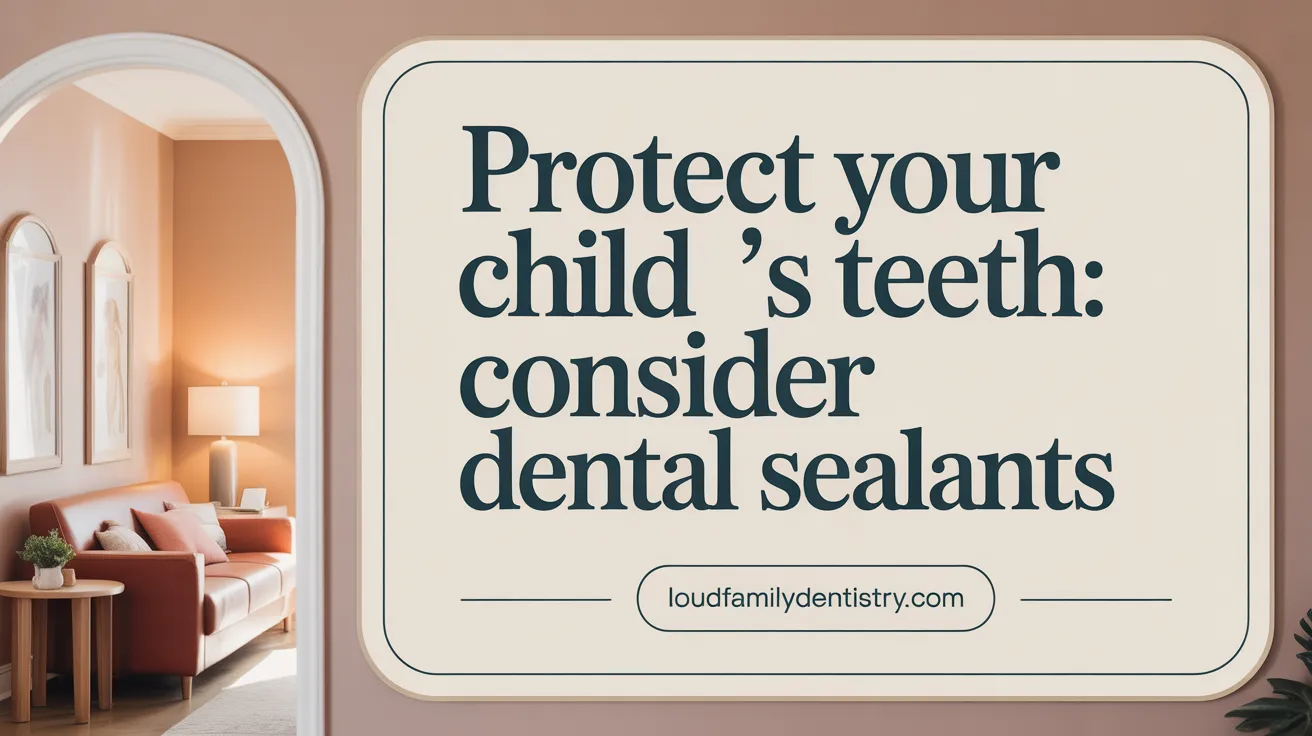
What Are Dental Sealants and Why Are They Used?
Dental sealants are thin protective coatings applied to the chewing surfaces of molars. They act as a barrier against bacteria and food particles, protecting hard-to-clean grooves from cavities. For more detailed information, visit Protecting Children's Teeth with Sealants.
How Effective Are Sealants in Preventing Decay?
Sealants prevent about 80% of cavities in the treated molars, making them highly effective in preserving children's teeth. Discover more at Dental Sealants for Children.
Role of Sealants in Children's Dental Care
Pediatric dentists recommend sealants as a simple, painless preventive measure, especially on molars, starting once the teeth have erupted. Regular dental visits support timely application to protect children's dental health. Learn about Pediatric Dental Services in Louisiana.
4. Restorative Dental Care: Crowns and Fillings for Children

What Are Crowns and Fillings Used For in Pediatric Dentistry?
Crowns and fillings are common treatments used to restore children's teeth that are damaged by decay or injury. Fillings repair small to moderate cavities by filling the damaged area, while crowns cover and protect extensively decayed or weakened teeth to restore their shape and strength. Learn more about Crowns and Fillings for Children.
Why Is Restoring Baby Teeth Important?
Even though baby teeth eventually fall out, restoring them is crucial because they maintain proper chewing function, support speech development, and hold space for permanent teeth. Untreated decay in baby teeth can lead to pain, infection, and problems with eating or speaking. The Importance of Early Dental Visits and Care for Baby Teeth explains these benefits in detail.
How Does Restorative Care Preserve Oral Health and Function?
By treating cavities early with fillings or crowns, dentists can prevent further damage and avoid the need for tooth removal. This helps preserve the natural alignment of teeth, promotes healthy jaw development, and ensures children can eat and speak comfortably. For comprehensive pediatric restorative options, see Restorative Dental Care for Kids.
Pediatric dental practices, such as those in Shreveport, emphasize restorative treatments to help children maintain strong, healthy smiles during crucial developmental years. Explore Pediatric Dentistry in Shreveport, LA for specialized care tailored to children's oral health needs.
5. Early Oral Hygiene Habits Start from Infancy
Why Is Cleaning Your Baby's Gums Important?
Even before the first tooth appears, cleaning your baby's gums after feedings helps remove bacteria and reduces the risk of early decay. Using a soft, damp cloth or infant gum cleaner gently wipes away milk residue and soothes gums. Learn more about Infant Oral Care Services in Shreveport and the Importance of Baby Teeth.
When Should You Start Brushing Your Child's Teeth?
As soon as the first tooth emerges—typically around 6 months—begin brushing with a soft-bristled toothbrush and a tiny smear of fluoride toothpaste. This helps establish a routine and keeps new teeth healthy. See guidance on the First Dental Visit by First Birthday and Brushing and Flossing Recommendations.
How Can Parents Support Good Oral Habits?
Parents play a vital role by supervising brushing until children develop manual dexterity and making dental care a positive experience. Leading by example, offering fun toothbrushes, and maintaining consistent routines encourage lifelong healthy habits. Get tips on the Parental Role in Child's Oral Health, Guiding Your Child's Dental Health, and Behavior management techniques in pediatric dentistry.
6. Fluoride Treatments to Strengthen Enamel
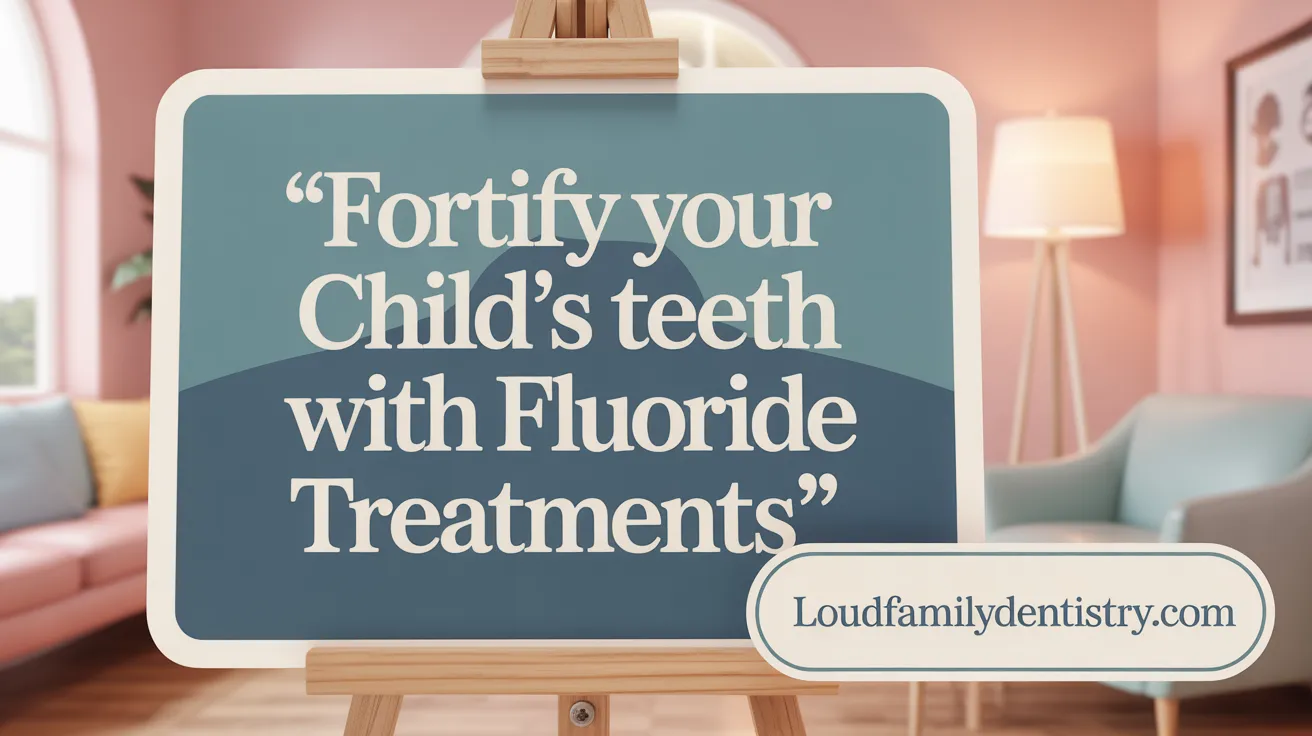
What Is Fluoride Varnish and How Is It Used?
Fluoride varnish is a topical fluoride treatment applied by pediatric dentists to strengthen children's tooth enamel and prevent decay. It is a quick, painless application often used during routine dental visits. Learn more about Fluoride Varnish Benefits and Fluoride Varnish Application by Pediatricians.
When Should Children Receive Fluoride Treatments?
Experts recommend applying fluoride varnish starting as early as 6 months of age, usually every six months until about age 5. This timing aligns with the eruption of primary teeth when enamel is most vulnerable. For detailed guidance, see Fluoride Varnish Recommendations and Preventive Pediatric Dental Treatments.
How Does Fluoride Help Prevent Cavities?
Fluoride varnish makes teeth more resistant to acid attacks from plaque bacteria and sugars. It promotes remineralization of enamel, reducing the risk of painful cavities and early tooth decay, which is common in young children. More information on cavity prevention can be found at Preventive Pediatric Dental Treatments and Oral Health Tips for Children.
By integrating fluoride varnish into regular dental care, parents and dentists can protect children's oral health effectively from infancy onward through Shreveport Pediatric Dental Care and other comprehensive pediatric dentistry services.
7. Role of Parents in Guiding Children's Oral Health
How Do Parents Help with Brushing and Flossing?
Parents play an essential role in their children's oral health by actively helping them brush and floss, especially until children develop good manual skills. Young children need assistance to ensure teeth are cleaned properly with fluoride toothpaste. For more details, see Oral Health Tips for Children.
How Can Parents Educate Children on Oral Hygiene?
Teaching children about good oral hygiene habits early establishes lifelong routines. Parents should explain why brushing and flossing matter, use positive language, and demonstrate proper techniques. Useful guidance is provided by Guiding Your Child's Dental Health.
Why Is Monitoring Diet and Habits Important?
Parents should limit sugary foods and drinks, especially before bedtime, since sugar contributes to cavities. Monitoring habits like thumb sucking and ensuring a nutritious diet supports healthy teeth and gums. For more information, refer to Keeping Your Child's Teeth Healthy.
By being involved in daily care, educating about dental health, and encouraging healthy habits, parents help guide their children to strong, cavity-free smiles. You can learn more about parental roles in oral health at Parental Role in Child's Oral Health.
8. Creating a Child-Friendly Dental Environment

Importance of a Welcoming Atmosphere
A welcoming and child-friendly atmosphere in dental offices is crucial to help children feel comfortable and safe during their visits. Clinics like Pediatric Dental Partners in Shreveport emphasize creating a modern, clean, and inviting environment tailored specifically for children.
Using Kid-Friendly Vocabulary
Dentists and staff use simple, friendly language to explain procedures and dental care, helping to demystify the experience and reduce fear. Engaging children with age-appropriate terms builds trust and encourages cooperation, similar to approaches described in Creating a Positive Dental Experience for Your Child.
Reducing Anxiety Through Environment
Comfort-focused designs, such as colorful treatment rooms and fun distractions, help lessen dental anxiety. Practices often combine these with behavior management techniques in pediatric dentistry like positive reinforcement and rewards to make dental visits enjoyable and stress-free for children.
9. Behavior Management Techniques to Reduce Dental Anxiety

How Do Pediatric Dentists Use Strategies to Reduce Dental Anxiety?
Pediatric dentists use specific behavior management techniques in pediatric dentistry to build trust and reduce fear in young patients. Methods such as The S.A.F.E. technique for reducing dental anxiety help familiarize children with dental tools and procedures gradually through engaging, game-like steps.
What Role Does Positive Reinforcement and Distractions Play?
Positive reinforcement, such as stickers or small prizes, encourages cooperation. Distractions, like turning brushing into a fun oral hygiene routines activity or using behavior management techniques in pediatric dentistry to reduce fear and anxiety, help children feel relaxed and engaged during visits.
How Do Dentists Build Trust with Children?
Building trust involves clear, kid-friendly communication, explaining treatments simply, and creating a fun, welcoming atmosphere. These efforts help children feel secure and develop positive associations with dental care.
10. The S.A.F.E. Technique: Engaging Children During Visits

What is the Sequential Approach to Familiarize and Engage (S.A.F.E.)?
The S.A.F.E. technique for reducing dental anxiety is a pediatric dentistry method that uses a step-by-step game-like process to help children become comfortable and reduce anxiety during dental visits. This is an example of effective behavior management techniques in pediatric dentistry.
How Does the Technique Use Dental Tools and Rewards?
Children are shown the dental tools, allowed to choose stickers, and shown how tools work on their own hands. Cooperation is encouraged by giving small prizes like toys. Such behavior management techniques in pediatric dentistry help create a positive dental experience.
How Does Interaction Minimize Fear?
By involving children actively and positively, the technique builds trust and familiarity, making dental experiences fun rather than scary. This approach is part of broader behavior management techniques in pediatric dentistry used to reduce dental anxiety.
11. Turning Brushing Routines into Fun Activities

How Can Brushing To Music Encourage Children to Brush?
Playing music while children brush their teeth can transform the task into an enjoyable activity. Music provides a fun and rhythmic cue that motivates children to brush for the recommended two minutes, helping them develop a consistent brushing habit. For more tips on Creating a Positive Dental Experience for Your Child, visit this resource.
Why Should Children Choose Their Own Toothbrush?
Allowing children to pick their own toothbrush with their favorite colors or characters fosters a sense of ownership and excitement. This personal choice encourages them to look forward to brushing, making the experience more engaging and less of a chore. For guidance on Establishing Early Dental Habits, see this helpful page.
How Do Fun Brushing Activities Promote Positive Oral Care Habits?
Turning daily brushing into a playful and interactive routine helps children associate oral care with positive feelings. Techniques like brushing to music or choosing their toothbrush build confidence and enthusiasm toward maintaining good oral hygiene, laying the foundation for lifelong healthy habits. Learn more about Oral Health Tips for Children to support these habits.
12. Consistent Dental Visits to Build Confidence

Regular appointments to normalize experience
Scheduling routine dental visits every six months helps children become familiar with the dental environment. This regularity reduces fear by making dental care a normal part of life. For more about the Importance of Regular Dental Checkups for Children and Regular Dental Visits for Children, visit these resources.
Helping children become comfortable
Consistent visits allow children to build trust with the dental team. Pediatric dentists often use child-friendly approaches and behavior management techniques in pediatric dentistry and positive reinforcement during these visits to ease anxiety and encourage cooperation. Learn more about behavior management techniques in pediatric dentistry and creating a Safe and Comfortable Environment for Children.
Long-term benefits for oral health
By establishing a pattern of regular dental care early on, children are more likely to maintain strong oral hygiene habits. Regular visits enable early detection and treatment of dental issues, promoting lifelong healthy teeth and gums. Discover insights on Early Detection of Dental Issues and Preventive Dental Care for Infants.
13. Using Positive Language to Reduce Dental Anxiety

How Can Positive Language Make Dental Visits Fun for Kids?
Framing dental visits as fun experiences helps children feel excited rather than scared. Using cheerful expressions, talking about "superhero cleanings", or "magic toothbrushes" can turn a visit into an adventure. For more on behavior management techniques in pediatric dentistry, see our resources.
Why Should Scary Words Be Avoided?
Words like "hurt," "needle," or "pain" can create fear. Instead, dentists and parents use gentle terms such as "tickle," "numb," or "sleepy juice" to explain procedures, which reassures children and reduces anxiety (Overcoming dental anxiety in children). This is part of effective behavior management techniques in pediatric dentistry.
How Does Encouraging Cooperation Help?
Praising children for their bravery and cooperation during procedures boosts confidence. Rewards like stickers or small toys encourage positive behavior and make kids look forward to future visits (Creating a Positive Dental Experience for Your Child). See additional behavior management techniques in pediatric dentistry for making visits enjoyable and stress-free.
14. Role-Playing Dental Visits at Home

Familiarizing Children with Procedures
Role-playing dental visits at home helps children become familiar with common procedures, like brushing, using a mirror, and dental tools. This practice reduces uncertainty, making actual visits less intimidating. For more on Creating a Positive Dental Experience for Your Child, see Creating a Positive Dental Experience for Your Child.
Reducing Fear Through Play
Engaging children in fun, simulated dental checkups eases anxiety. Pretend play allows kids to express feelings and build comfort with the dental environment in a safe space. Learn about behavior management techniques in pediatric dentistry in The S.A.F.E. technique for reducing dental anxiety.
Enhancing Understanding of Dentist Role
By acting as the dentist or patient, children learn what to expect and the importance of oral health. This understanding promotes positive attitudes towards dental care and cooperation during real visits. More insights into positive dental experiences for children can be found at How to Make Going to the Dentist a Positive Experience for Children.
15. Reading Books and Watching Videos About Dentistry

Creating Positive Associations
Reading children’s books and watching videos about dental visits can transform a potentially scary experience into a familiar and even fun one. These resources use child-friendly dental environments and child-friendly language with colorful illustrations or engaging animations to explain what happens during a dental visit, helping reduce anxiety and build trust. For more on behavior management techniques in pediatric dentistry and creating a safe dental environment, these resources offer effective strategies.
Educational Resources for Children
Books like "Brush, Brush, Brush!" and videos designed for kids provide simple explanations about oral hygiene routines and why regular dental visits for children are important. They introduce dental tools, the role of the dentist, and emphasize good habits such as brushing and flossing, making learning enjoyable. Additional information about oral health tips for children and early dental care for children can complement these educational resources.
Preparing Kids for Dental Visits
Using these resources at home allows children to role-play and ask questions, which prepares them for real appointments. Familiarity gained through reading or watching helps demystify dental procedures, encourages cooperation, and promotes a positive dental experience for children. For further support, explore behavior management techniques in pediatric dentistry and strategies from Cara Dental to make visits comfortable and rewarding.
16. Bringing Comfort Items to Dental Appointments

Using Toys or Blankets for Security
Bringing a favorite toy, blanket, or comfort item to dental appointments can help children feel more secure in an unfamiliar environment. For tips on creating a safe and comfortable environment for children at dental visits, see Creating a Positive Dental Experience for Your Child.
Helping Children Feel Safe
These familiar items serve as a source of comfort, calming nerves and reducing feelings of fear or anxiety. Learn more about Children's Dental Anxiety Management.
Easing Anxiety During Treatments
Comfort items provide a distraction during treatments, helping children to relax and cooperate more easily with dental procedures. Techniques such as The S.A.F.E. technique for reducing dental anxiety can also assist in easing anxiety during behavior management techniques in pediatric dentistry.
17. Scheduling Appointments When Children Are Well-Rested

Why Is Timing Important for Children's Dental Visits?
Scheduling dental appointments for children after naps or in the morning helps ensure they are well-rested and more cooperative during the visit. A child who is tired or hungry may be irritable, making the dental experience more challenging for both the child and the dental team. For more information on Scheduling dental appointments for children, visit Cara Dental in Sandy Springs.
How Does Being Well-Rested Improve Cooperation?
Well-rested children tend to have better attention spans and are less anxious, which enhances their ability to follow instructions during dental care. This results in smoother appointments, less stress, and a more positive dental experience. Learn more about Dental anxiety strategies for kids at Honey Bee Pediatric Dental Co. Kansas.
Tips for Parents Scheduling Dental Visits
- Aim for morning appointments or right after a nap.
- Avoid scheduling around mealtimes to reduce hunger-related fussiness.
- Bring comfort items to ease any residual anxiety.
By scheduling visits when children are rested, parents and dental teams can create a calm and supportive environment that fosters good dental habits and reduces fear. See Creating a Positive Dental Experience for Your Child from Capitol Hill Pediatric Dentistry for further guidance.
18. Praising Children’s Bravery to Encourage Cooperation

How does positive reinforcement help at the dentist?
Praising children for brave behavior during dental visits builds a positive connection with dental care. It encourages them to cooperate and eases anxiety. Learn more about Reducing Fear and Anxiety About Dental Visits and Children's dental anxiety effects as well as behavior management techniques in pediatric dentistry.
How can building self-esteem improve children’s dental experiences?
Acknowledging children’s efforts boosts their confidence and makes them feel proud. This self-esteem growth motivates kids to keep up good oral habits. For guidance, see Building Confidence in Dental Care, Guiding Your Child's Dental Health, and Creating a Positive Dental Experience for Your Child.
What motivates good behavior during dental appointments?
Simple praise combined with small rewards makes children more willing to follow instructions. This encouragement creates a fun, stress-free visit and promotes lifelong dental care habits. Explore tips on Creating a Positive Dental Experience for Your Child and How to Make Going to the Dentist a Positive Experience for Children alongside behavior management techniques in pediatric dentistry.
19. Offering Small Rewards After Dental Visits

Encouraging Positive Behavior
Offering small rewards after dental visits can motivate children to cooperate and reduce anxiety during appointments. Celebrating their bravery fosters a positive dental experience.
Using Prizes or Stickers
Simple incentives like stickers or small toys are effective in making visits enjoyable, helping children associate dental care with fun and accomplishment. For more ideas on Creating a Positive Dental Experience for Your Child.
Reinforcing Good Dental Habits
Rewards reinforce healthy oral hygiene routines at home, encouraging kids to maintain habits that keep their teeth strong and cavity-free as recommended in Oral Health Tips for Children.
20. Using Sedation Options for Anxious Children

What sedation options are used for anxious children in pediatric dentistry?
Pediatric dental practices often use nitrous oxide and IV sedation in pediatric dentistry and oral sedation to help anxious children relax during dental procedures. These methods alleviate fear and ensure the child remains calm throughout treatment.
How do dental clinics ensure safety when using sedation?
Strict safety protocols are followed by licensed professionals when administering sedation. This includes monitoring vital signs and maintaining a controlled environment to protect the child’s health. Learn more about sedation options for anxious pediatric dental patients.
Why is sedation important for children undergoing dental care?
Sedation helps ensure comfort during dental procedures, making the visit less traumatic and promoting positive associations with future dental care. This improves cooperation and long-term oral health outcomes. For more information on managing children's dental anxiety, see Overcoming dental anxiety in children.
21. Preventing Cavities: Addressing the Most Common Childhood Disease

How Common Are Cavities Among Children?
Cavities, or tooth decay, are the most common chronic disease in children in the United States. Over half of children aged 6 to 8 have experienced cavities in their primary teeth. Similarly, more than half of adolescents aged 12 to 19 have had cavities in their permanent teeth. For more on this topic, see Oral Health Tips for Children.
Why Is Preventive Dental Care Important?
Regular dental visits starting by the first birthday, twice-yearly cleanings, fluoride treatments, and dental sealants are essential steps to prevent cavities. Fluoride varnish can reduce primary tooth cavities by one-third, and sealants prevent up to 80% of cavities on back molars. Learn more about Preventive Dental Care for Children and the Benefits of Early Dental Visits.
How Do Cavities Affect Children's Health?
Untreated cavities can cause pain, infections, and difficulties with eating, speaking, and learning. Early detection and prevention protect children's oral health and overall well-being, setting a foundation for lifelong healthy teeth. For additional information, visit Good Oral Health Starts Early.
22. Brushing Twice Daily with Fluoride Toothpaste

Recommendations for brushing frequency
Brushing twice daily is strongly recommended for children starting as soon as the first tooth appears. This routine helps remove plaque—a major cause of cavities—and maintains healthy gums. For detailed guidance, see Oral Health Tips for Children.
Proper fluoride use
For children under three years, use a tiny smear of fluoride toothpaste. From age three and older, a pea-sized amount is advised. Fluoride strengthens tooth enamel and significantly reduces the risk of decay. Learn more about fluoride use at Good Oral Health Starts Early.
Reducing risk of decay
Consistent brushing twice daily with fluoride toothpaste, combined with regular dental visits and sealants, forms an effective defense against cavities, helping children maintain strong and healthy teeth throughout childhood. Explore further recommendations at Pediatric Dentistry in Shreveport, LA.
23. Starting to Brush as Soon as First Tooth Appears

Why is early dental care important?
Early dental care promotes healthy gums and teeth from infancy. Starting oral hygiene when the first tooth appears helps prevent early childhood caries, which are common and can cause pain and infection. For more details, see Healthy Gums and Teeth from Infancy and Early Dental Care for Infants.
How should parents brush infants’ teeth?
Parents should begin by gently cleaning their baby's gums after feeding with a soft cloth. Once the first tooth erupts, use a soft-bristled toothbrush with just water or a tiny smear of fluoride toothpaste. This establishes a brushing routine and removes plaque buildup that can cause cavities. Refer to Oral Health Tips for Children and Keeping Your Child's Teeth Healthy for detailed guidance.
How to prevent early childhood caries?
- Avoid putting babies to bed with bottles containing sugary liquids.
- Limit sugary snacks and drinks, especially before bedtime.
- Use fluoride treatments and sealants as advised by pediatric dentists.
- Encourage regular dental visits starting by the first birthday to monitor oral health and receive professional preventive care. Learn more at First Dental Visit by First Birthday, Preventive Dental Care for Infants, and Shreveport Pediatric Dental Care.
24. Fluoride in Community Water and Its Benefits

Role in Cavity Prevention
Fluoride in community water helps prevent tooth decay by strengthening tooth enamel and making it more resistant to acid attacks from plaque bacteria and sugars. It also aids in the remineralization process, reversing early signs of cavities. For more detailed information, see Oral Health Tips for Children.
Natural Fluoride Sources
Fluoride is naturally found in soil, water, and some foods. However, the amount in natural water supplies varies, so community fluoridation adjusts levels to the optimal amount for protecting teeth. Learn more about fluoride benefits in Good Oral Health Starts Early.
Encouraging Community Fluoridation
Many dental organizations support community water fluoridation as a safe, effective, and low-cost method to improve dental health for all ages. Communities are encouraged to maintain or implement fluoridation programs to reduce childhood cavities and promote strong teeth. For advocacy and prevention tips, visit Oral Health Tips for Children.
25. Limiting Sugary Foods and Drinks to Protect Teeth
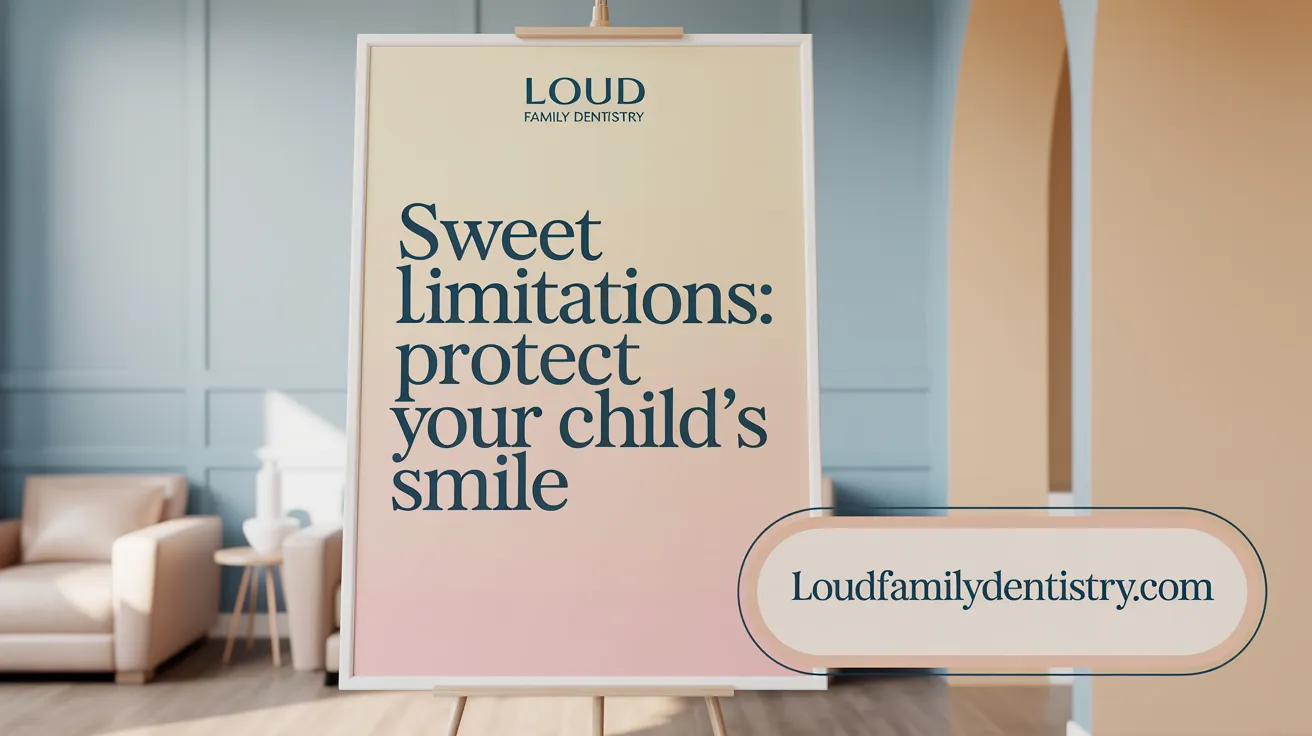
How Does Diet Affect Children's Oral Health?
Diet plays a critical role in maintaining children's dental health. Consuming excessive sugary foods and drinks significantly increases the risk of cavities, as sugars feed harmful bacteria that produce acids attacking tooth enamel. For more information, see Oral Health Tips for Children and Keeping Your Child's Teeth Healthy.
Why Should Sugary Snacks Be Avoided Before Bedtime?
Avoiding sugary snacks before bedtime is especially important since saliva production decreases during sleep. This reduction limits the mouth's natural ability to neutralize acids and wash away food particles, making teeth more vulnerable to decay overnight. Learn more about Keeping Your Child's Teeth Healthy and Oral Health Tips for Children.
How Can Using Straws Help Protect Teeth?
Using straws when drinking sugary or acidic beverages helps minimize contact between the liquid and teeth, reducing the potential for enamel erosion and cavities. This simple habit can be a useful part of a child's oral care routine. For tips on oral hygiene and preventing tooth decay, visit Pediatric Dentistry in Shreveport, LA, and see Keeping Your Child's Teeth Healthy.
26. Weaning from Bottles and Breastfeeding by Age One to Prevent Decay

Recommendations on Weaning
Experts recommend weaning infants from breastfeeding or bottle use by age one to reduce the risk of dental decay. This guideline helps promote healthier oral development and reduces prolonged exposure to sugary liquids. For more on this topic, see Pediatric Dentistry in Shreveport, LA.
Relation to Oral Growth and Health
Early weaning supports proper jaw growth and oral development, preventing potential issues like misalignment caused by extended sucking habits. Learn about early dental care tips at early dental care for infants.
Preventing Bottle Tooth Decay
Avoiding bottles with sugary liquids before bedtime and weaning by age one significantly decrease the occurrence of "baby bottle tooth decay," a common issue in young children due to prolonged milk or juice exposure. Additional details can be found in oral health tips for children.
27. Wiping or Rinsing Baby's Mouth After Feeding
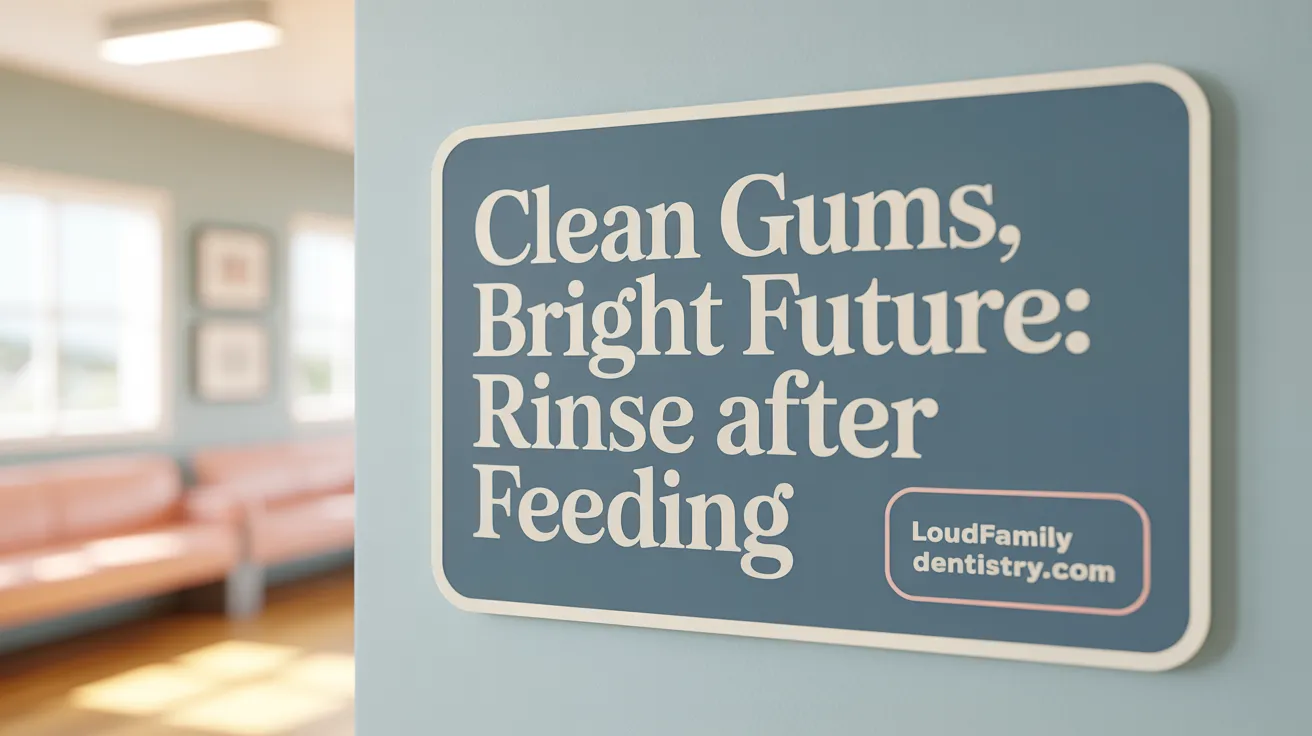
Why Is It Important to Wipe or Rinse a Baby's Mouth After Feeding?
Removing sugars and milk residue after feeding is essential in preventing tooth decay in infants. Leftover milk or sugary liquids can feed harmful bacteria, leading to cavities even before teeth emerge. Learn more about the Importance of Early Dental Visits and Preventing Tooth Decay in Babies.
How Does This Fit Into Early Oral Care Practices?
Regularly wiping or rinsing a baby's mouth with a soft, damp cloth helps maintain a clean oral environment, supporting early dental health. This simple habit lays the foundation for lifelong oral hygiene and protects developing gums and teeth from decay. Discover detailed guidance on Early Dental Care Tips for Parents and Good Oral Health Starts Early.
Parents can start this practice right after every feeding to ensure a healthy start for their child's mouth, contributing to stronger, cavity-free teeth as they grow. For more parenting tips, visit Oral Health Tips for Children.
28. Recognizing and Managing Tooth Sensitivity

What Causes Tooth Sensitivity in Children?
Tooth sensitivity in children can result from cavities, gum disease, or enamel loss. Other causes include exposed tooth roots from gum recession and early dental trauma. For more information, visit Pediatric Dentistry in Shreveport, LA.
When Should You Seek Professional Dental Care?
If your child experiences persistent or severe tooth sensitivity, or shows signs of pain and discomfort, it’s important to consult a pediatric dentist promptly. Early intervention prevents further dental issues. Learn more about Early Dental Care for Children.
What Are Treatment Options for Sensitive Teeth?
Treatment may involve restorative care like fillings or crowns to repair damaged teeth. Fluoride applications and sealants are also used to strengthen enamel and reduce sensitivity. In some cases, specialized toothpaste recommended by your dentist can help manage symptoms. Explore Restorative Dental Care for Kids for detailed treatment options.
29. Pulp Therapy for Teeth with Damaged Pulp

What are pulpotomy and pulpectomy?
Pulpotomy and pulpectomy are dental procedures used to treat teeth with damaged or infected pulp, especially in children.
- Pulpotomy removes only the diseased pulp at the tip of the tooth’s pulp chamber when infection is limited.
- Pulpectomy involves removing all the infected pulp tissue from the tooth, including roots, used when infection has spread further. Learn more about Pulpotomy Procedure and Pulpectomy Procedure.
When is each treatment used?
- Pulpotomy is ideal for baby teeth with pulp inflammation confined to the crown area.
- Pulpectomy is performed when infection reaches root canals, requiring complete pulp removal to save the tooth.
Why preserve baby teeth?
Preserving baby teeth through pulp therapy maintains space needed for proper jaw development, supports healthy speech and chewing, and prevents alignment problems when permanent teeth erupt. Early intervention with these treatments improves long-term oral health for children. For comprehensive information, visit Early Dental Intervention for Kids.
30. Importance of Baby Teeth as Space Holders

What Role Do Baby Teeth Play in the Eruption of Permanent Teeth?
Baby teeth serve as essential placeholders in the mouth. They maintain the correct space for permanent teeth to emerge properly, guiding their alignment and positioning. Learn more about the importance of baby teeth in Pediatric Dentistry in Shreveport, LA.
What Are the Effects of Premature Tooth Loss?
If baby teeth are lost too early, it can lead to misalignment and crowding of permanent teeth. This may cause difficulties with chewing, speaking, and could require orthodontic treatment later. For detailed information on the impact of early tooth loss and care, see Pediatric Dental Partners Shreveport.
How Do Baby Teeth Support Jaw Growth?
Baby teeth contribute to shaping the jawbone and supporting proper facial development. They help ensure that the jaw grows evenly and strong enough to accommodate permanent teeth when they arrive. Explore Early Dental Care for Children to understand how jaw growth is supported by pediatric dental care.
31. Managing Common Childhood Dental Issues
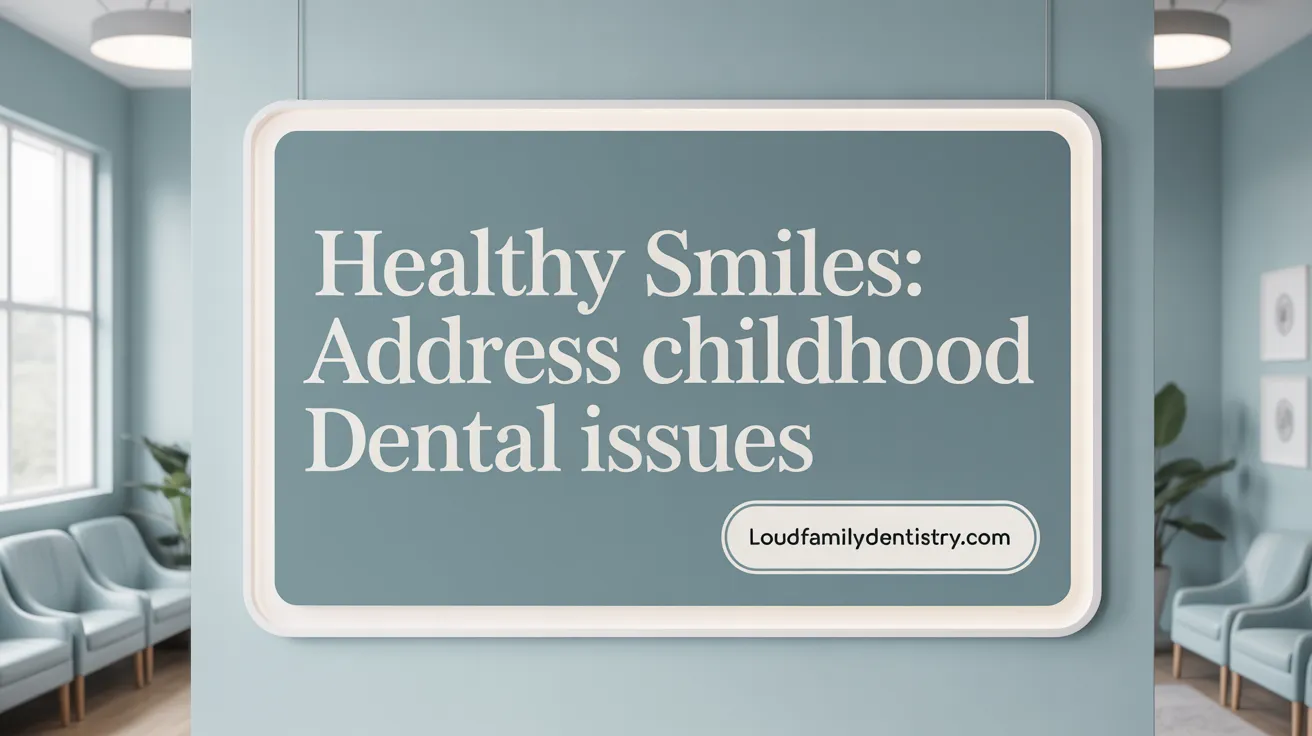
What Are Common Childhood Dental Problems?
Children often face dental issues like cavities, gum disease, and thumb sucking. Cavities are the most frequent chronic disease in kids, caused by poor oral hygiene and sugary diets. Gum disease can result from plaque buildup and affects the gums' health. Thumb sucking, if persistent past age five, may lead to teeth misalignment. Learn more about Common dental problems in children.
How Do Teeth Grinding and Sensitive Teeth Affect Children?
Teeth grinding (bruxism) is common among children and can cause worn teeth or jaw discomfort. Sensitive teeth can cause discomfort during eating or brushing and often result from enamel wear or cavities. For detailed information, visit Sensitive teeth in kids and related issues.
What Strategies Help Address Dental Anxiety in Children?
Creating a child-friendly, comforting environment reduces dental fear. Explaining procedures in simple terms, using positive reinforcement, and involving kids in their care help build trust. Some clinics employ behavior management techniques in pediatric dentistry like the S.A.F.E. method which familiarizes and engages children with dental tools to ease anxiety. For severe cases, sedation options like the use of nitrous oxide in pediatric dentistry ensure comfort while maintaining safety.
Parents' involvement in guiding dental habits and supporting early visits also fosters positive attitudes toward oral health, encouraging lifelong dental care habits. See more about Guiding your child's dental health and Overcoming dental anxiety in children.
32. Using Modern Dental Technology for Children's Care

Enhancing Pediatric Dental Care with Technology
Modern dental technology is revolutionizing how children's dental treatments are delivered, making visits more efficient and comfortable. Advanced tools like 3D scanners are used to capture detailed images of a child's teeth quickly, reducing discomfort compared to traditional impressions.
Same-Day Crowns with CEREC Technology
Technologies such as CEREC enable the creation of same-day dental crowns. This means that children requiring restorative care can have crowns designed, fabricated, and placed in a single visit, minimizing anxiety and the number of appointments.
Benefits of Technology in Pediatric Dentistry
- Improved treatment speed: Faster procedures reduce time children spend in the chair.
- Greater comfort: Non-invasive imaging methods enhance the experience.
- Precision: Digital models provide accurate restorations tailored to each child's needs.
Children and parents alike benefit from these efficiencies, helping maintain a positive attitude toward dental care and supporting lifelong oral health. Additionally, incorporating behavior management techniques in pediatric dentistry ensures a child-friendly dental environment, reducing anxiety and promoting comfort during visits.
33. Providing a State-of-the-Art Child-Friendly Facility
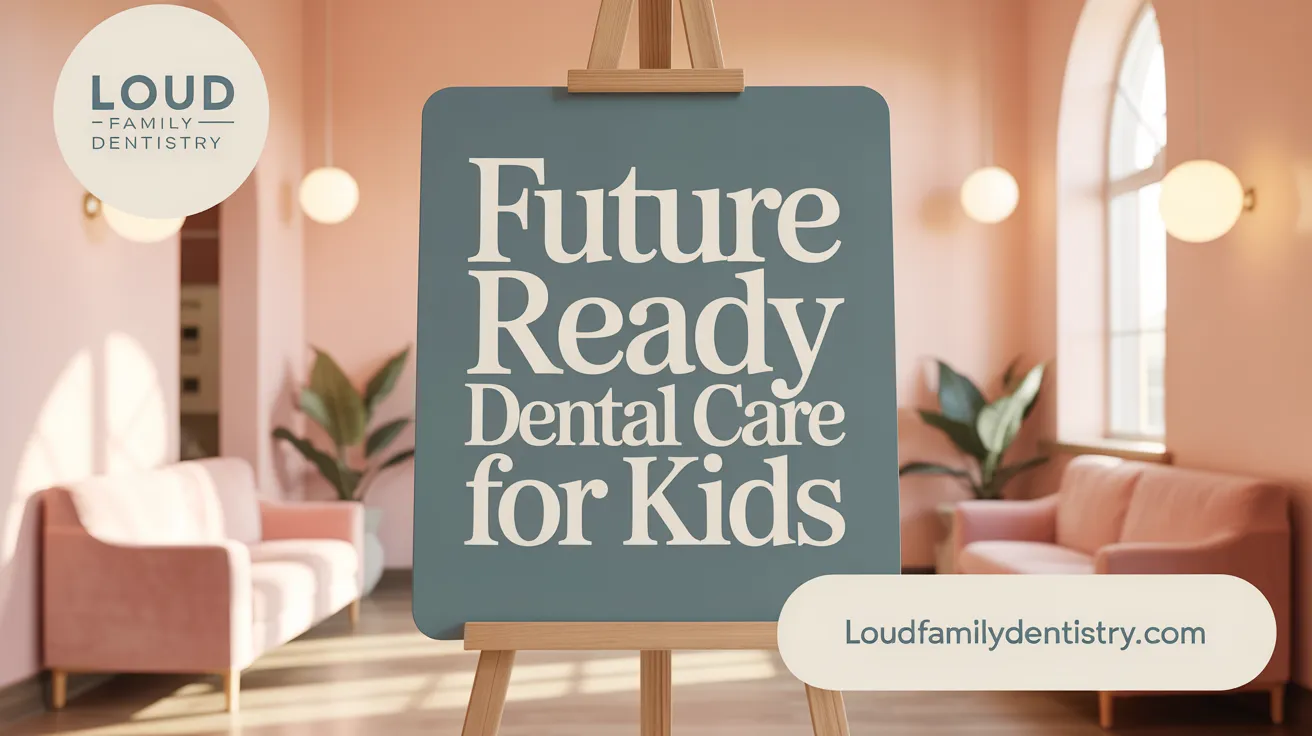
Designing Comfortable Treatment Chairs
Modern pediatric dental offices focus on ergonomic and cushioned treatment chairs designed specifically for children. These chairs ensure comfort during procedures, helping reduce anxiety and making dental visits more pleasant. Learn more about Creating a Positive Dental Experience for Your Child.
Safe Sterilization Practices
State-of-the-art clinics maintain rigorous sterilization standards using advanced digital records and sterilization technology. This provides a safe environment that protects young patients from potential infections. See Holly Cook Pediatric Dentist for detailed information.
Creating Positive Experiences
Child-friendly dental offices incorporate colorful décor, friendly staff using kid-friendly language, and engaging distractions like toys or videos in waiting areas. These features foster a welcoming atmosphere that eases dental anxiety and promotes a positive dental experience for children. For tips, visit Comforting Dental Environment for Children.
34. Comprehensive Pediatric Dental Services for Long-Term Health

Exam and Cleaning
Regular dental checkups starting from a child's first tooth help detect issues early and maintain healthy teeth and gums. Experts recommend two cleanings per year to promote oral health. For more information, see Importance of Regular Dental Checkups for Children, Regular Dental Visits for Children, and First dental visit by the first birthday.
Fluoride Applications
Fluoride treatments, including varnishes applied by pediatric dentists, strengthen enamel and prevent cavities, especially in young children who are more prone to decay. Learn more about Fluoride Varnish Benefits, Fluoride Treatments for Children, and Fluoride Varnish Recommendations.
Sealants and Restorative Care
Dental sealants effectively prevent cavities by protecting hard-to-reach molars. When decay occurs, restorative treatments like fillings and crowns preserve tooth structure and function, supporting long-term dental health. See resources on Dental Sealants for Cavity Prevention, Crowns and Fillings for Children, and Restorative Pediatric Dentistry.
35. Engaging Children with Kid-Friendly Vocabulary and Techniques

Explaining Procedures Simply
Pediatric dentists use simple, clear language that children can understand to describe dental procedures. This helps demystify the experience and makes children feel more comfortable and involved.
Using Games and Stickers
Incorporating fun elements like games and giving stickers or small prizes encourages cooperation and creates positive associations with dental visits. Activities such as demonstrating tools on the child's hand or letting them choose rewards build engagement and trust. Learn more about Creating a Positive Dental Experience for Your Child.
Reducing Fear with Tailored Communication
Dentists tailor their communication style to each child’s age and temperament, using soothing tones and reassurance to ease anxiety. This approach reduces fear and helps children develop a positive attitude toward dental care from an early age. Details on behavior management techniques in pediatric dentistry can further explain these strategies.
36. Early Orthodontic Assessments to Monitor Jaw Development

Why Are Early Facial Growth Checks Important?
Early assessments help track jaw and facial development, crucial for preventing future dental issues. Monitoring growth allows timely intervention before problems worsen. For comprehensive insights, visit Pediatric dental services in Shreveport.
How Can Misalignments Be Identified Early?
Dentists check for signs like crooked teeth, improper bites, or thumb sucking impacts. Early detection of these misalignments facilitates easier and more effective treatment. Learn more from Pediatric Dentistry in Shreveport, LA.
When Should Orthodontic Referrals Be Made?
Children are often referred to orthodontists by age 7 if issues such as crowding or bite problems are detected. Prompt referral maximizes treatment success and supports healthy development. Guidance available at Pediatric dental services in Shreveport.
37. Promoting a Nutritious Diet to Support Oral Health

Why Are Fruits, Vegetables, and Cheese Important for Children's Oral Health?
Fruits and vegetables provide vital vitamins and minerals that support healthy gums and teeth. Cheese contains calcium which strengthens tooth enamel and neutralizes acids in the mouth, helping prevent decay.
How Does Reducing Sugary Intake Benefit Oral Health?
Limiting sugary foods and drinks minimizes plaque formation and acid attacks on teeth. Avoiding sugary snacks, especially before bedtime, reduces cavity risk and helps keep the mouth healthy, as recommended in Oral Health Tips for Children.
What Impact Does Diet Have on Teeth and Gums?
A balanced diet rich in nutrient-dense foods promotes strong teeth and resilient gums. Poor nutrition can increase susceptibility to cavities, gum disease, and other oral health problems, a fact emphasized in guidance from Keeping Your Child's Teeth Healthy.
Establishing healthy eating habits early supports lifelong dental health by protecting tooth structure and maintaining gum integrity, aligning with advice from Shreveport Pediatric Dental Care.
38. Encouraging Healthy Oral Habits as a Family

How Can Parents Lead by Example in Oral Health?
Parents play an essential role in shaping their children's oral health habits. By practicing good brushing and flossing routines themselves, they set a practical example. Children learn by watching, so when parents prioritize oral hygiene and attend regular dental visits for children's oral health, kids are more likely to adopt these behaviors.
Why Are Family Brushing and Flossing Routines Important?
Establishing a family routine where everyone brushes and flosses together encourages consistency and fun. This shared activity helps children feel supported and motivated. Using child-friendly toothpaste and flossers tailored for young ones can make the process easier and more engaging for kids.
How Can Families Create a Positive Oral Health Culture?
Turning oral care into a positive daily ritual fosters lasting habits. Parents can make brushing enjoyable by playing music or using timers, offering praise and small rewards. Open conversations about dental health and scheduling regular pediatric dental checkups reinforce the importance of caring for teeth. This collective approach builds a supportive environment that promotes healthy smiles for the whole family.
39. Avoiding Thumb Sucking Beyond Age 5 to Prevent Misalignment

Why is avoiding thumb sucking beyond age 5 important?
Thumb sucking past age 5 can affect teeth alignment and jaw growth, potentially causing dental misalignment and speech issues. Learn more about Thumb-sucking issues and its effects on children's dental health.
What effects can prolonged thumb sucking have on teeth and jaw?
It may push teeth out of position and influence the shape of the roof of the mouth, leading to bite problems. See detailed information on Common childhood dental issues and managing dental impacts.
How can parents help children stop thumb sucking?
Educating children about dental health and encouraging alternative behaviors, like using a comforting toy or positive reinforcement, can help. Tips on Guiding Your Child's Dental Health, Creating a Positive Dental Experience for Your Child, and behavior management techniques in pediatric dentistry provide useful strategies for parents.
When should intervention occur?
Early prevention and gentle discouragement starting before or around age 5 offer the best chances to avoid lasting dental problems. Find more about Importance of Early Dental Visits and Establishing Early Dental Habits.
40. Promoting Use of Protective Mouthguards for Sports

How Can Protective Mouthguards Prevent Dental Injuries in Children?
Mouthguards act as a cushion for the teeth, gums, and jaw during physical activities, significantly reducing the risk of fractures, tooth loss, and soft tissue injuries. For children involved in sports, wearing a mouthguard is a simple yet effective way to prevent potentially serious dental trauma. For more information on protective mouthguards and pediatric dental safety, visit Pediatric Dentistry in Shreveport, LA and learn about Protective Mouthguards for Kids.
What Types of Mouthguards Are Suitable for Children?
There are three main types of mouthguards commonly used in pediatric dentistry:
- Stock Mouthguards: Ready-made and affordable but may not fit well, which can affect comfort and protection.
- Boil-and-Bite Mouthguards: Molded to a child's teeth after softening in hot water; they offer a better fit than stock mouthguards.
- Custom-Fitted Mouthguards: Made by dental professionals for precise fit and maximum protection; recommended for active young athletes.
Learn more about mouthguards and early dental care at Shreveport Pediatric Dentist and explore Oral Hygiene for Children.
How Can Parents Encourage Consistent Use of Mouthguards?
Encouraging regular use involves educating children on the importance of protecting their teeth, incorporating mouthguard fitting as part of the sports routine, and selecting comfortable, fun designs that children are excited to wear. Positive reinforcement and making mouthguard use a standard part of sports preparation help build lasting habits. For tips on guiding your child's dental health and creating positive dental experiences, see Creating a Positive Dental Experience for Your Child and Behavior Management Techniques in Pediatric Dentistry.
41. Using Digital Records and Sterilization for Safety and Efficiency

Importance of Modern Record-Keeping
Digital records streamline patient data management, making it easier for dental teams to track treatment history and schedule visits. This enhances personalized care for pediatric patients by ensuring accurate and up-to-date records. For more about Pediatric Dentistry in Shreveport, LA, visit this resource.
Infection Control
Strict sterilization protocols combined with digital systems minimize contamination risks. Using state-of-the-art sterilization equipment and digital files reduces physical paperwork, thus limiting exposure to germs. Learn about State-of-the-Art Pediatric Dental Technology and Comforting Dental Environment for Children.
Benefits for Pediatric Patients
Faster access to dental histories via digital records means less waiting and smoother appointments. Enhanced infection control creates a safer environment, helping children feel more comfortable and confident during visits. See details on Creating a Positive Dental Experience for Your Child and Overcoming Dental Anxiety in Children.
42. Community Fluoridation and Its Role in Pediatric Dental Health

How Does Fluoride in Local Water Benefit Children's Teeth?
Community water fluoridation helps strengthen children's tooth enamel, making it more resistant to decay. It provides a constant, low-level fluoride exposure that prevents cavities effectively across the population. Learn more about the importance of fluoride in water and fluoridated tap water and cavities.
How Does Community Fluoridation Reduce Cavities on a Large Scale?
Fluoridated water has been shown to prevent about one-third of cavities in primary teeth, significantly lowering cavity rates among children in a community. This population-wide protection supports healthier smiles for more kids. For detailed information, see Childhood Cavities Statistics and Preventive Dental Care for Infants.
What Public Health Initiatives Support Fluoride Use?
Health agencies promote professional fluoride varnish applications alongside water fluoridation programs to boost preventive care. Education and access efforts ensure families in places like Shreveport Pediatric Dental Care can benefit from these community measures for long-term pediatric dental health. Find out more about Fluoride Varnish Benefits and Child-Friendly Dental Care in Shreveport.
43. Professional Associations Guiding Pediatric Dentistry Standards
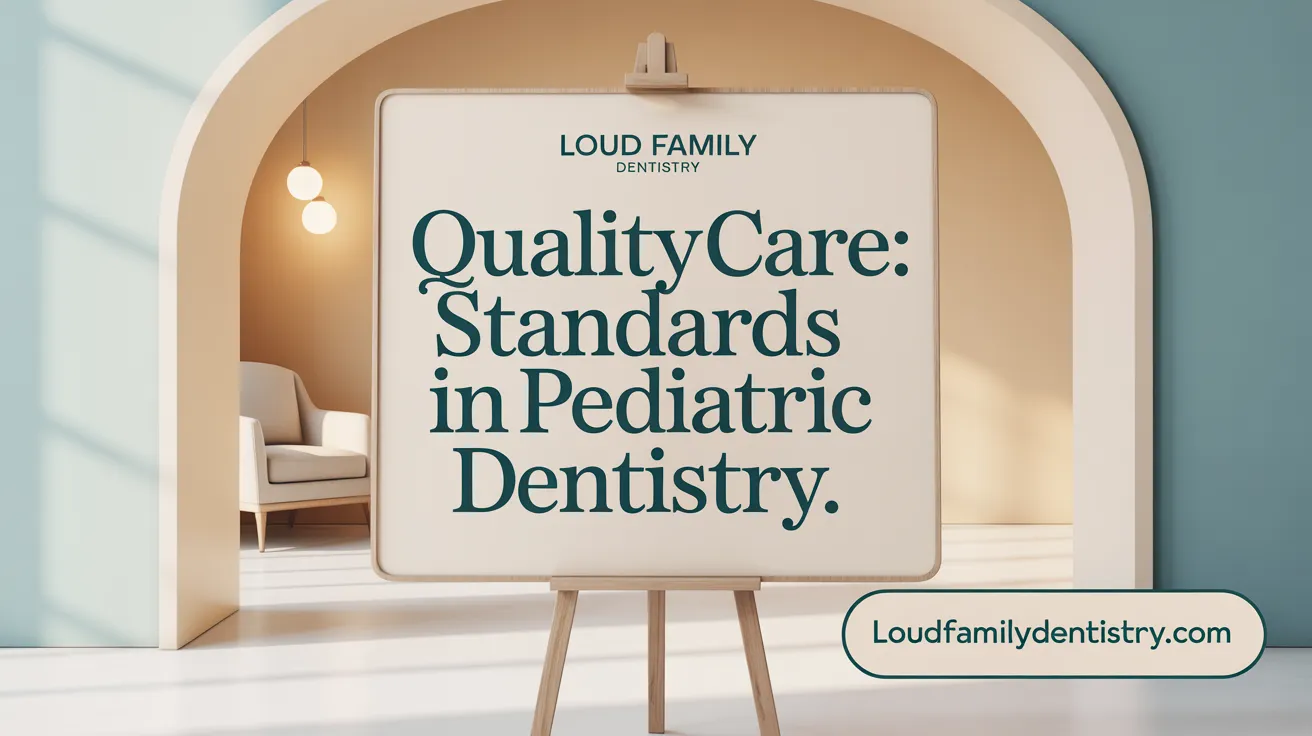
What is the role of the ADA and AAPD in pediatric dentistry?
The American Dental Association (ADA) and the American Academy of Pediatric Dentistry (AAPD) establish guidelines and best practices for pediatric dental care. They promote preventive care, safety standards, and educate dentists and families about children's oral health.
How do they ensure quality and safety standards?
These associations provide evidence-based protocols for procedures, endorse regular training for pediatric dentists, and advise on the use of fluoride, sealants, sedation, and behavior management to maintain a safe environment and high-quality care for children.
Why is credible certification important?
Certification by bodies like ADA and AAPD assures parents that their child's dentist meets professional standards tailored specifically for children's unique dental needs. This supports delivering effective, safe, and compassionate care from infancy through adolescence.
44. Comprehensive Oral Care from Infancy Through Adolescence
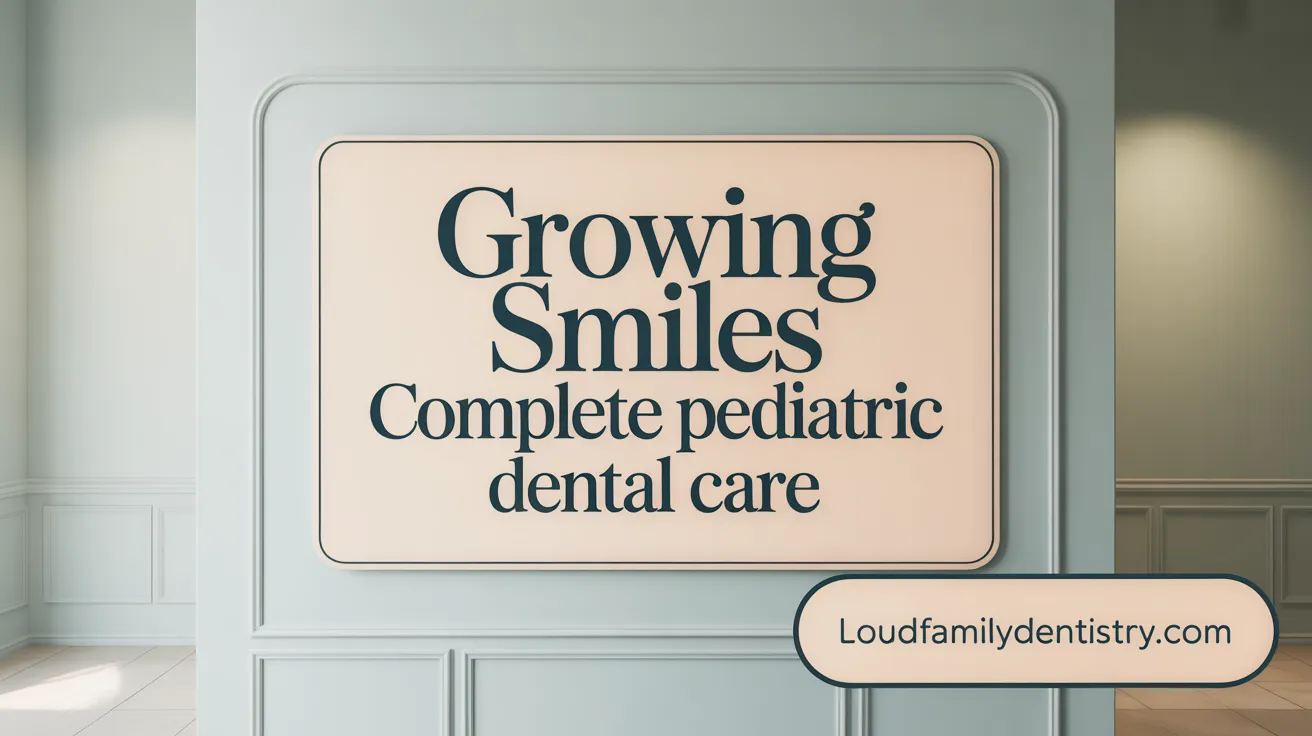
Tailored Care for Different Ages
Pediatric dental care evolves with a child's growth, beginning at the eruption of the first tooth around 6 months and continuing through adolescence. Infants benefit from gentle gum cleaning and parental guidance, while toddlers start using fluoride toothpaste and toothbrushes. As children grow, more preventive measures like dental sealants are introduced to protect permanent teeth.
Importance of Developmental Milestones
Monitoring milestones such as first tooth eruption, full set of primary teeth by age three, and permanent teeth emergence from age six helps dentists identify issues early. Early dental visits, ideally by the first birthday, allow assessment of jaw development and oral health, facilitating timely interventions like pulp therapy or orthodontic referrals. Learn more about importance of early dental visits and first dental visit by the first birthday.
Long-Term Dental Health Strategies
Establishing regular dental visits, ideally twice yearly, supports early detection and prevention of cavities and other common childhood issues. Parental involvement is crucial for fostering proper brushing, flossing habits, and limiting sugary foods. Preventive treatments including fluoride applications and sealants strengthen enamel and maintain oral health through adolescence and beyond. For helpful tips on oral health before first tooth and guiding your child's dental health, visit these resources.
45. Use of Positive Reinforcement to Promote Cooperation

Praising Children
Positive reinforcement through praising children during dental visits encourages cooperation and reduces anxiety. Compliments help kids feel proud and valued, reinforcing good behavior. For more on Creating a Positive Dental Experience for Your Child and Dental Anxiety Strategies for Kids.
Using Stickers and Toys as Rewards
Dental offices often use stickers and small toys as tangible rewards for children who cooperate during treatments. These incentives make visits enjoyable and motivate children to follow dental instructions. Learn about Making pediatric dental visits fun and engaging and Positive Dental Experiences for Children.
Building Positive Dental Associations
By combining praise and rewards, dentists help children associate dental care with fun and positive experiences. This approach fosters lifelong good oral health habits and diminishes dental fear. Discover more about Guiding Your Child's Dental Health and Positive dental behaviors by parents.
46. Applying Fluoride Varnish Starting at Six Months
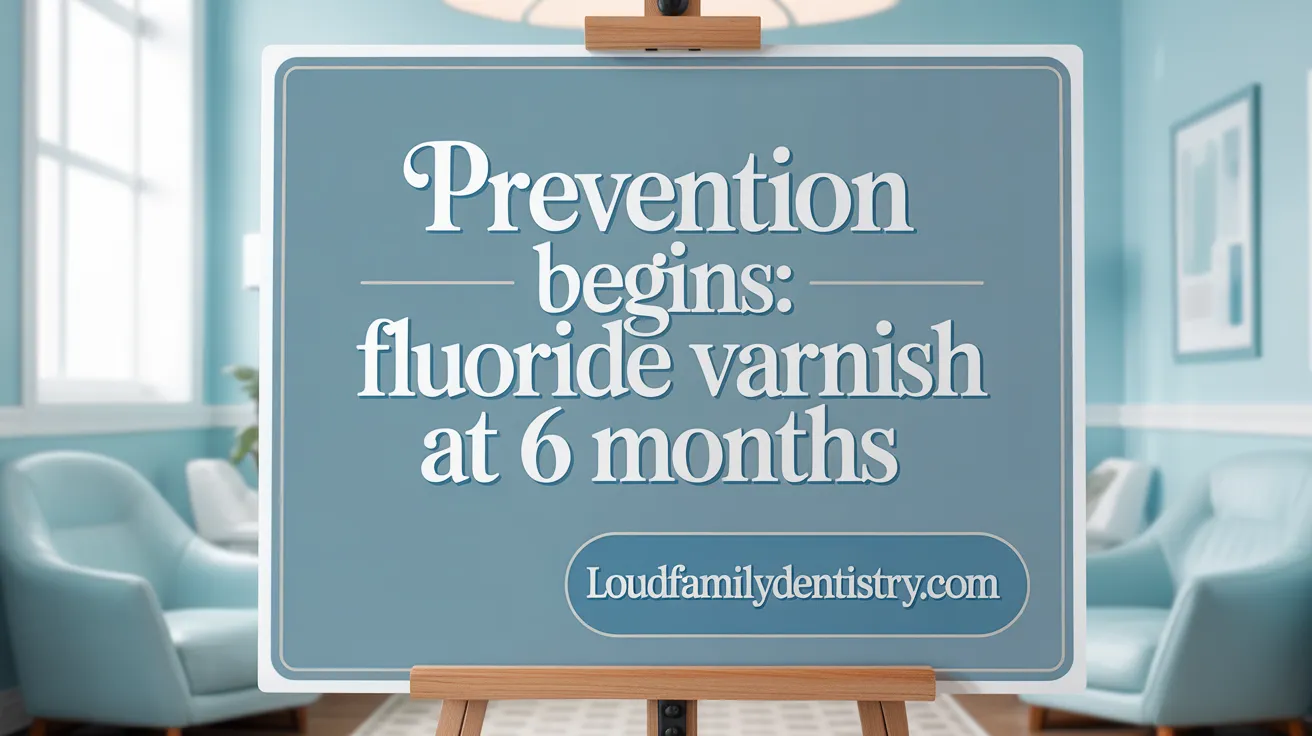
Early Preventive Treatments with Fluoride Varnish
Fluoride varnish is a preventive treatment recommended to begin as early as six months of age to protect young children's teeth from decay. Pediatricians or dentists apply this safe coating to strengthen enamel and prevent cavities. For more information, see Fluoride Varnish Benefits.
Frequency of Application
The varnish is usually applied every six months to maximize its protective effects and maintain strong tooth enamel during early development. Learn about Recommended biannual dental cleanings for kids.
Effectiveness in Reducing Decay
This treatment has been shown to reduce cavities by about one-third in primary teeth, making it a very effective method to combat early childhood tooth decay when used consistently alongside regular dental care. For detailed guidance, visit Preventive Dental Care for Infants.
47. Importance of Regular Cleanings for Healthy Gums and Teeth

Why are regular cleanings essential for children’s oral health?
Regular dental cleanings play a crucial role in maintaining children's oral hygiene by effectively removing plaque and tartar that brushing alone cannot clear. This removal helps prevent gum disease, ensuring gums stay healthy and inflammation-free.
Furthermore, regular professional cleanings reinforce healthy gums and teeth from infancy, establishing a strong foundation for lifelong dental wellness. They also allow pediatric dentists to monitor teeth development and detect any issues early.
By attending biannual dental cleanings for kids, children benefit from expert care that supports not only cavity prevention but also overall gum health, promoting a confident, healthy smile every day.
48. Educating Families on Oral Health Best Practices

Community Outreach and Parent Education
Pediatric dental offices in Shreveport actively engage in community outreach and parent education, providing families with education on proper oral hygiene and preventive care. Parents learn to clean infants' gums even before teeth emerge, understand the importance of fluoride use, and recognize early signs of dental issues.
Sustaining Lifelong Dental Health
Teaching parents how to foster healthy habits such as regular brushing, flossing, limiting sugary snacks, and scheduling twice-yearly dental visits helps establish routines that support children's dental health over their lifetime. Early education empowers families to prevent cavities and promote strong teeth and gums and healthy habits.
Role of Pediatric Dental Practices
Dentists and staff create welcoming environments and provide resources to make dental visits positive experiences, reducing anxiety and encouraging families to maintain consistent care. This foundation ensures children grow up with good dental habits that last.
49. Comprehensive Care to Address Dental Emergencies in Children
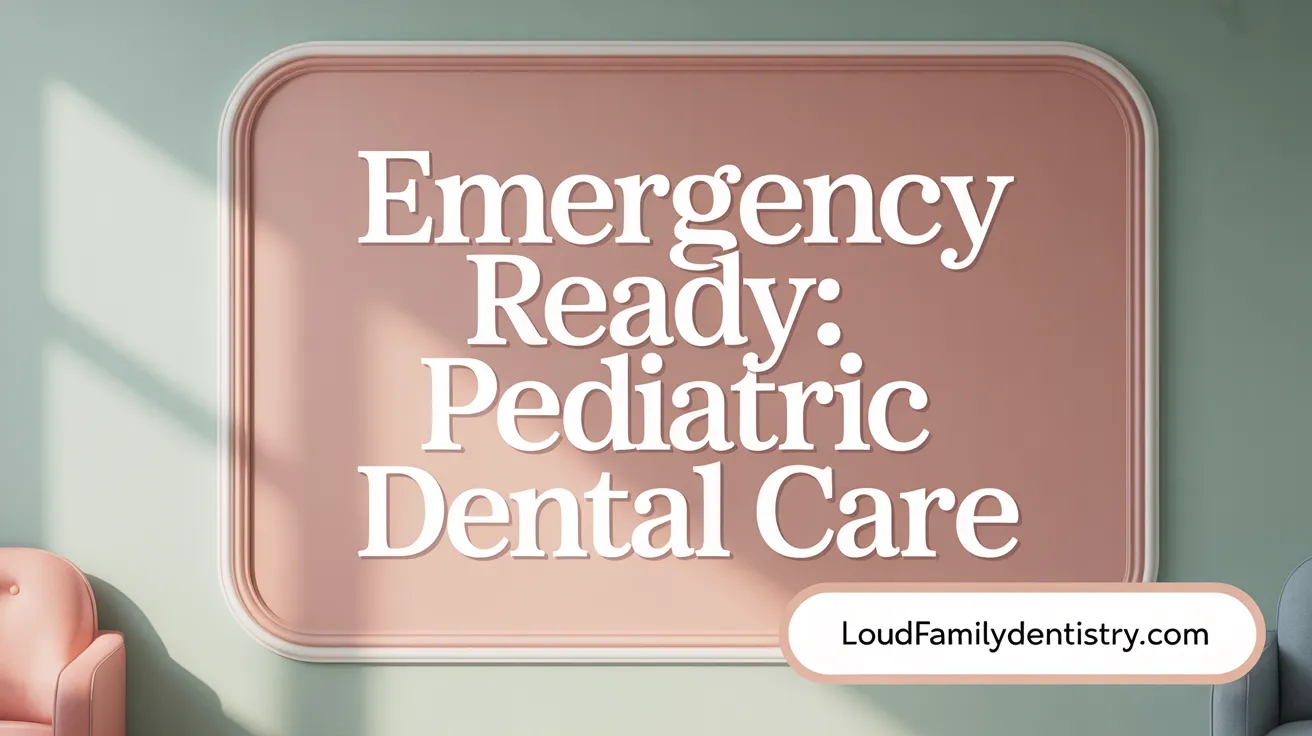
Treating Trauma and Pain
Children may experience dental traumas such as chipped or knocked-out teeth, which require prompt treatment to reduce pain and preserve the tooth. Emergency restorative procedures like crowns or pulp therapy help save affected teeth and relieve discomfort. For specialized services in this area, see Restorative Dental Care for Kids or Early pulp therapy interventions.
Availability of Urgent Care
Many pediatric dental clinics in Shreveport and surrounding areas provide urgent care services to address sudden dental issues quickly and effectively. These clinics ensure children receive timely attention, minimizing distress and preventing further damage. Explore options at Pediatric Dentistry in Shreveport, LA and Pediatric dental services in Shreveport.
Minimizing Dental Complications
Early intervention during dental emergencies is critical to avoid complicated infections or lasting damage. Pediatric dentists employ specialized techniques and treatments to restore oral health and support normal dental development after trauma or acute dental conditions. Learn more about these approaches in Pediatric dental care Benton Louisiana and Restorative pediatric dentistry.
50. Recognizing and Treating Gum Disease in Children Early
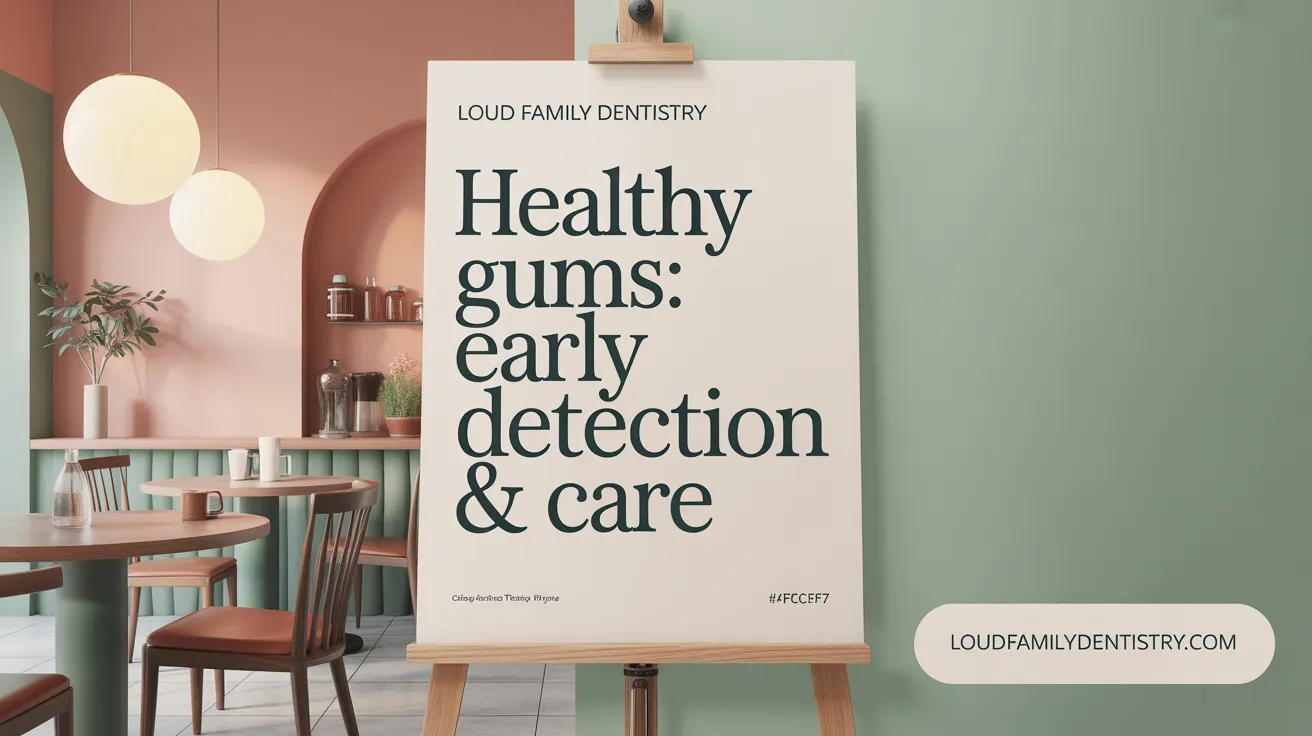
What are the signs of pediatric gum disease?
Early gum disease in children often shows as red, swollen, or bleeding gums, especially during brushing. Persistent bad breath and tender gums may also be indicators. For more details, visit Shreveport Pediatric Dental Care and Oral Health Tips for Children.
How is gum disease treated in children?
Treatment focuses on professional dental cleaning to remove plaque and tartar buildup, sometimes complemented by restorative care if cavities or damage are present. In advanced cases, specialized therapies may be necessary. Learn about these treatments at Holly Cook Pediatric Dentist and Pediatric Dentistry in Shreveport, LA.
How can parents help prevent gum disease in children?
Parents should encourage regular brushing and flossing, schedule dental visits every six months, and ensure children have dental sealants and fluoride treatments when recommended to protect teeth and gums. Helpful tips can be found at Importance of Regular Dental Checkups for Children, Oral Health Tips for Children, and Dental Sealants for Children.
51. Monitoring Tooth Eruption Patterns Regularly

Tracking Development Milestones
Monitoring when a child's teeth appear is crucial for ensuring proper dental development. Primary teeth usually erupt between 6 to 12 months, and keeping track helps identify any delays or irregularities early. Learn more from Pediatric Dentistry in Shreveport, LA.
Addressing Eruption Issues
Regular dental visits allow pediatric dentists to spot concerns such as delayed eruption, early loss, or over-retained baby teeth. Early intervention can prevent misalignments and other complications. For guidance, see Pediatric Dentistry in Shreveport, LA.
Supporting Proper Growth
By observing eruption patterns, dentists can guide parents on maintaining good oral hygiene, nutrition, and habits that support healthy jaw and tooth development. Helpful tips are available at Oral Health Tips for Children.
Consistent monitoring plays a vital role in fostering lifelong oral health and successful dental outcomes for children. Visit Kerst & Caskey Pediatric Dentistry for comprehensive pediatric dental services.
52. Using Visual Aids to Explain Procedures to Children

Simplifying dental concepts for children
Using visual aids helps explain complex dental procedures in a simple, understandable way for young patients. For more tips on Creating a Positive Dental Experience for Your Child and Engaging children in dental care, check out these resources.
Engaging young patients
Colorful pictures, models, and videos engage children and make the dental visit more interactive and fun. The use of positive reinforcement in dental visits and Fun Oral Hygiene Routines can significantly enhance the dental experience for kids.
Reducing fear through familiarity
By showing tools and procedures visually beforehand, children feel less anxious and more comfortable during treatment. Techniques like The S.A.F.E. technique for reducing dental anxiety, behavior management techniques in pediatric dentistry, and Managing children's dental fears help build trust and reduce anxiety in pediatric dental visits.
53. Early Detection of Misaligned or Impacted Teeth

Why are orthodontic assessments important for children?
Regular orthodontic assessments, ideally starting by age 7, help monitor facial growth and jaw development. Early checks enable dentists to identify misaligned or impacted teeth early, allowing timely intervention before issues worsen. For more information, see Pediatric dental services in Shreveport and Pediatric dentistry in Shreveport, LA.
What signs should parents watch for?
Parents should observe if their child has difficulty biting, persistent thumb sucking beyond age 5, teeth crowding, or uneven jaw growth. These signs may indicate developing orthodontic problems that warrant a professional evaluation. Learn about Parental role in children's oral hygiene, Monitoring facial growth, and Thumb sucking effects.
What are the benefits of timely intervention?
Early detection and treatment of misaligned or impacted teeth promote better oral health, facilitate correct jaw development, and reduce the need for extensive future orthodontic procedures. Prompt care supports optimal function, appearance, and comfort for the child’s dental health. For detailed guidance, refer to Early dental care for children and Pediatric Dentistry in Shreveport, LA.
54. Teaching Proper Brushing Techniques and Supervision

How Do Parents Guide Their Children in Brushing?
Parents play a crucial role in teaching children to brush their teeth properly. Until children develop the dexterity to brush effectively on their own, parental guidance and supervision ensure that all tooth surfaces are cleaned thoroughly. Learn more about the Parental Role in Child's Oral Health.
Why Is Supervision Important Until Dexterity Develops?
Young children often lack the fine motor skills needed for effective brushing. Supervision prevents missed spots that could lead to cavities or gum problems. Parents should assist brushing until their child can handle the routine independently, usually by age 6 to 8. For additional tips, see Oral Health Tips for Children.
How Can Daily Brushing Routines Be Established?
Establishing a consistent, twice-daily brushing routine helps children adopt lifelong oral hygiene habits. Parents can make brushing fun by singing songs or using colorful toothbrushes, and by modeling good habits themselves. Consistency helps normalize this essential activity for children. Explore more about Creating a Positive Dental Experience for Your Child.
55. Transitioning from Soft Cloth to Toothbrush Correctly

How should parents clean their infant's mouth before teeth erupt?
Before teeth appear, parents should gently clean their baby's gums after each feeding using a soft, damp cloth. This removes milk residue and bacteria, helping prevent decay and promoting healthy gums. For more guidance on Oral Health Tips for Children and early dental care for infants, visit these resources.
When is it appropriate to introduce a toothbrush to a child?
Around 6 months, as the first teeth erupt, it's recommended to introduce a small, soft-bristled toothbrush designed for infants. This transition helps the child get accustomed to brushing, laying the foundation for good oral hygiene. For advice on starting good dental habits early and when to start flossing, see these valuable links.
How can parents ensure their child feels comfortable during this transition?
Parents should make brushing a positive and fun experience by using gentle motions, allowing the child to hold the toothbrush, and engaging in playful routines like brushing to music. Patience and encouragement help children feel secure and develop healthy habits early. Learn more about creating a positive dental experience for your child and using positive reinforcement in dental visits.
56. Flossing Begins When Teeth Start Touching

Why Is Flossing Important for Children?
Flossing removes plaque and food debris from between teeth where a toothbrush can't reach. This helps prevent cavities and gum disease, promoting healthy gums and teeth and keeping your child's teeth healthy.
When Should Children Start Flossing?
Children should begin flossing once two of their teeth start touching. This stage usually happens around ages 2 to 3, but it varies with each child’s dental development. For more guidance, see recommendations on early dental care for children and when to start flossing.
What Are Child-Friendly Floss Tools?
Using child-appropriate flossers or floss picks makes flossing easier and more comfortable for young children. These tools have small handles and easy-to-use floss strands designed specifically for small hands and mouths, encouraging good flossing habits early on. Learn about building good dental habits for children and engaging children in dental care.
57. Avoiding Baby Bottle Tooth Decay by Proper Practices

Avoid Putting Children to Bed with Sugary Drinks
One of the most important steps to prevent baby bottle tooth decay is avoiding putting children to bed with bottles containing anything other than water. Sugary liquids can pool around the teeth during sleep, feeding decay-causing bacteria. For more on this, see Oral Health Tips for Children.
Limit Juice Intake
Limiting the amount of juice your child consumes, especially before age 12 months, reduces exposure to sugar. When offering juice, serve it during mealtime and use a straw to minimize contact with teeth. Learn more about limiting juice and sugary snacks at Keeping Your Child's Teeth Healthy.
Maintain Good Oral Hygiene
Start cleaning your child's gums after feeding and begin brushing teeth as soon as the first tooth appears. Use fluoride toothpaste and ensure brushing twice daily to keep plaque and cavities at bay. Helpful guidelines can be found at Good Oral Health Starts Early.
58. Parents Modeling Positive Dental Behaviors

How Does Parental Behavior Influence Children's Dental Habits?
Parents serve as the primary role models for their children's oral health habits. When parents consistently demonstrate good dental routines, such as brushing and flossing, children are more likely to adopt these practices early on. This modeling helps children understand the importance of oral hygiene and integrates these behaviors into their daily lives naturally. For more on the Parental Role in Child's Oral Health, visit Kerst & Caskey Pediatric Dentistry.
How Can Parents Encourage Positive Attitudes Toward Dental Care?
Encouragement through involvement in oral care routines makes dental hygiene fun and less intimidating for children. Parents can turn brushing into a shared activity, use positive language about dental visits, and reward cooperation. This supportive approach fosters a positive mindset about dental health and helps build children's confidence regarding oral care. See tips on Creating a Positive Dental Experience for Your Child for more ideas.
Why Is Building Trust Important for Children's Dental Visits?
Trust between children and dental professionals is crucial to ease dental anxiety. Parents can prepare their children by discussing what to expect and maintaining open communication. When children see their parents actively supporting and trusting dental care, they feel safer and more relaxed during dental visits, leading to more positive experiences and long-term oral health adherence. Effective strategies can be found in behavior management techniques in pediatric dentistry.
59. Using Stickers and Toys as Motivational Rewards

How do stickers and toys encourage a child's participation during dental visits?
Providing stickers and toys as rewards helps engage children by making dental visits interactive and fun. This positive reinforcement encourages their cooperation and involvement throughout the appointment. For more on Creating a Positive Dental Experience for Your Child, see tips on building confidence in dental care and behavior management techniques in pediatric dentistry.
How do these rewards build a positive experience for children?
Offering small prizes creates a sense of achievement, reducing anxiety and fear associated with dental visits. It transforms the experience into something children look forward to rather than dread. Learn more about Overcoming dental anxiety in children, Behavior management techniques in pediatric dentistry, and use of nitrous oxide in pediatric dentistry for anxiety reduction strategies.
How do motivational rewards strengthen good dental habits?
By rewarding children for good behavior and participation, dentists promote consistent oral hygiene practices. Receiving rewards fosters enthusiasm for dental care, encouraging lifelong healthy habits. Explore Oral Health Tips for Children, Establishing Early Dental Habits, and Creating a Positive Dental Experience for Your Child for advice on guiding children's dental health.
60. Educating on Risks of Prolonged Sugary Drink Use

What are the risks of prolonged juice and milk consumption?
Regular use of sugary drinks like juice and milk, especially when given in bottles or sippy cups, significantly raises the risk of tooth decay in children. Sugars feed harmful bacteria that cause cavities, leading to pain and dental problems. For more information, see Oral Health Tips for Children and Keeping Your Child's Teeth Healthy.
How can parents encourage water consumption?
Encouraging children to drink water instead of sugary drinks is vital. Parents can serve water during meals, offer it throughout the day, and model water drinking themselves to promote this healthy habit. Helpful guidance is available at Pediatric Dentistry in Shreveport, LA and Good Oral Health Starts Early.
What strategies help reduce nighttime bottle use?
Avoid letting children go to bed with bottles containing juice, milk, or other sugary liquids. Instead, offer water if a bottle is needed. Gradually weaning from bottles by age one can help prevent decay and support proper jaw growth. Read more at Shreveport Pediatric Dental Care and early dental care for infants.
61. Community-Oriented Dental Care Emphasizing Accessibility

Offering Flexible Scheduling
Community dental clinics like Pediatric Dental Partners Shreveport in Shreveport provide flexible hours, including extended and rotating Friday hours, to accommodate busy family schedules.
Affordable Dental Options
These clinics often emphasize preventive care such as cleanings, fluoride treatments, and sealants to reduce costly dental problems, making quality pediatric dentistry affordable and accessible. See more about Preventive pediatric dental treatments and Dental Sealants for Children.
Building Lasting Relationships
Strong patient-dentist relationships foster trust and comfort, encouraging regular visits and lifelong oral health habits in children. Local dentists prioritize a welcoming, child-friendly environment to support this bond. Learn about creating a Comforting Dental Environment for Children that helps build trust and comfort. Also, explore behavior management techniques in pediatric dentistry that support positive dental experiences.
62. Fostering a Welcoming and Fun Educational Environment

How do pediatric dental offices create a child-friendly environment?
Pediatric dental clinics design their offices with children in mind to make visits comfortable and enjoyable. Features include colorful, modern spaces, comfortable treatment chairs, and kid-friendly decor. Amenities like Wi-Fi, beverages, and fun waiting areas help children feel relaxed while waiting. For example, Pediatric Dental Partners Shreveport offers a welcoming and child-friendly dental environment that supports positive dental experiences. See more about Shreveport Pediatric Dental Care.
What engaging techniques help reduce anxiety during visits?
Dentists often use simple, clear language and explain procedures step-by-step. Techniques like the S.A.F.E. approach involve familiarizing children with tools through play, sticker rewards, and demonstrations on their hands. Role-playing or storytelling also prepares kids for what to expect, making visits less intimidating. Capitol Hill Pediatric Dentistry discusses how creating a positive dental experience helps reduce fear and anxiety in children. Additionally, behavior management techniques in pediatric dentistry offer approaches to ease dental anxiety and help children cope during visits.
How do these approaches support positive dental experiences?
Creating a fun and informative environment builds trust and reduces fear. Positive reinforcement, small rewards, and involving children in their care encourage cooperation. Early regular visits normalize dental care, helping children develop lifelong healthy habits with less anxiety. The importance of regular dental visits for children is widely recognized to foster healthy teeth and gums, supporting long-term oral health. For more on this, see Shreveport Pediatric Dental Care and Oral Health Tips for Children.
63. Specialized Training of Pediatric Dentists Enhances Care Quality

What education do pediatric dentists receive?
Pediatric dentists complete specialized education beyond dental school, including additional years focused on children's dental care. This training equips them with expertise in managing young patients' unique needs.
How do pediatric dentists manage children's behavior?
They are skilled in behavior management techniques in pediatric dentistry, such as the S.A.F.E. method, which helps reduce fear and anxiety by involving and engaging children during treatment.
How are treatments tailored for children?
Pediatric dentists design dental treatments to suit children's developmental stages. They use child-friendly approaches, preventive measures like dental sealants for cavity prevention, and restorative procedures adapted for growing mouths.
This specialized training ensures children receive compassionate, effective care that promotes lifelong oral health.
64. Implementing Mindfulness and Relaxation Techniques for Anxious Kids

Creating Calm and Comfort
Mindfulness and relaxation practices in pediatric dentistry foster a calm environment. These behavior management techniques in pediatric dentistry help reduce anxiety by encouraging children to focus on their breathing and stay present, making dental visits less intimidating.
Reducing Fear Through Engagement
By using mindfulness, dentists can help children manage their fears during procedures. Relaxation methods, combined with positive reinforcement, ease children's worries and create a supportive atmosphere, as recommended by Smile Valley Pediatric Dentistry, incorporating effective behavior management techniques in pediatric dentistry.
Enhancing Cooperation and Treatment Success
When children feel relaxed and secure, they are more cooperative during dental treatments. Mindfulness boosts their ability to stay calm, which allows for smoother procedures and a better overall dental experience, consistent with techniques promoted by Smile Valley Pediatric Dentistry and other behavior management techniques in pediatric dentistry.
65. Use of Nitrous Oxide to Alleviate Dental Anxiety Safely

What is the procedure for using nitrous oxide in pediatric dentistry?
Nitrous oxide, also known as laughing gas, is administered through a small mask placed over the child's nose. The child breathes in the gas, which induces a calming and relaxed state without causing unconsciousness. This procedure is quick, usually starting before treatment begins and adjusted according to the child's comfort. For more details, see use of nitrous oxide in pediatric dentistry and Nitrous oxide and IV sedation in pediatric dentistry.
What safety protocols ensure the safe use of nitrous oxide?
Pediatric dental clinics use strict safety protocols to monitor the child's oxygen and nitrous oxide levels continuously during the procedure. Only licensed professionals administer the sedation, and emergency equipment is always on hand. The child remains conscious and responsive, ensuring that the treatment is both safe and comfortable. Learn more about Sedation options for anxious pediatric dental patients and use of nitrous oxide in pediatric dentistry.
How effective is nitrous oxide in calming dental anxiety in children?
Nitrous oxide is highly effective in reducing fear and anxiety, helping children stay calm and cooperative during dental procedures. When combined with behavior management techniques in pediatric dentistry, it fosters a positive dental experience, making future visits less stressful for young patients. For strategies on managing dental fears in kids, visit Dental anxiety strategies for kids.
66. IV Sedation Options for Patients with Severe Dental Fear

When is IV Sedation Appropriate?
IV sedation is considered for children who experience severe dental anxiety or fear that cannot be managed with conventional behavior management techniques in pediatric dentistry. It helps ensure the child remains calm and cooperative during necessary dental procedures.
Licensed Professional Administration
IV sedation in pediatric dentistry is administered strictly by licensed dental professionals trained in sedation and emergency care, following rigorous safety protocols to protect the patient.
Comfort and Safety
This sedation method offers effective pain control and relaxation, making dental treatment comfortable for the child while maintaining vital signs monitoring to ensure safety throughout the procedure. For more on sedation options including nitrous oxide and IV sedation in pediatric dentistry, see Smile Valley Pediatric Dentistry.
67. Pediatric Dental Cleanings: Importance and Process
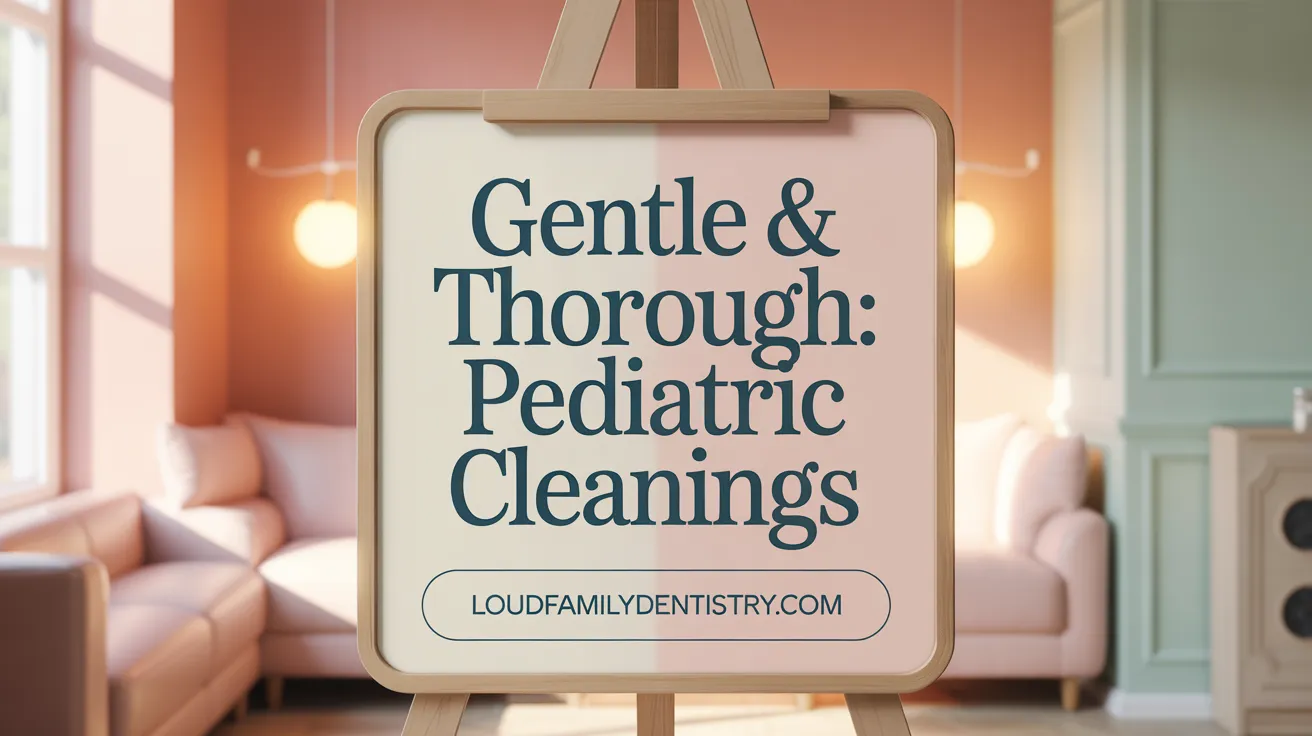
What happens during a pediatric dental cleaning?
Pediatric dental cleanings focus on removing plaque and tartar buildup that can cause cavities and gum problems. Dentists use gentle tools tailored for children’s mouths to ensure comfort.
How are children taught proper brushing during visits?
Dentists and hygienists demonstrate brushing techniques to both children and parents, helping establish good habits early on. Fun, engaging methods often encourage kids to brush regularly at home.
Why are regular cleanings important for prevention?
Regular dental cleanings help prevent cavities and other issues by maintaining healthy teeth and gums from infancy through adolescence, reducing the need for complex treatments later.
68. Fluoride Toothpaste Usage Guidelines for Young Children
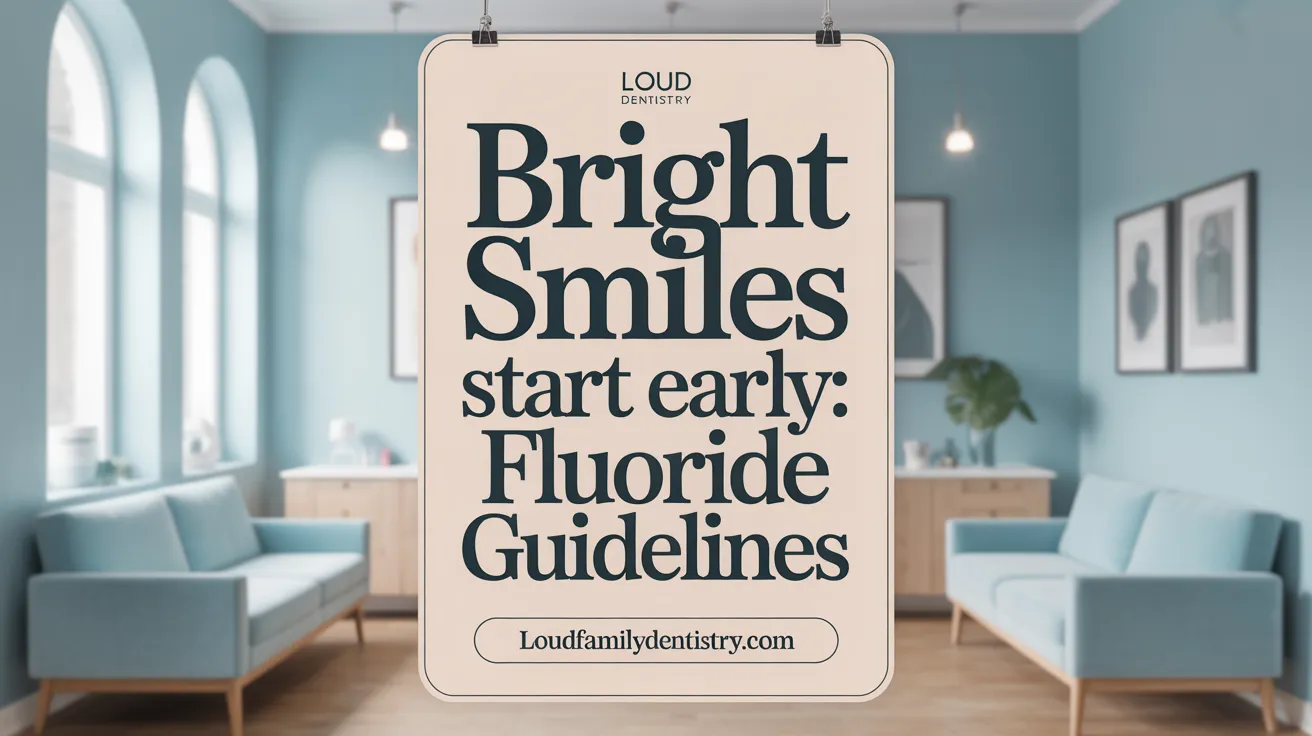
How Much Fluoride Toothpaste Should Young Children Use?
For children under 3 years old, use a tiny smear of fluoride toothpaste—about the size of a grain of rice. This small amount ensures safety while helping protect developing teeth.
Once children turn 3, increase the amount to a pea-sized dot. This quantity is effective in preventing cavities without overwhelming young mouths.
Is Fluoride Toothpaste Safe and Effective for Kids?
Fluoride toothpaste, when used in recommended amounts, strengthens enamel and reduces tooth decay effectively. Parental supervision during brushing helps prevent swallowing excessive fluoride, maintaining safety.
Following these guidelines fosters early cavity prevention and supports healthy oral development in children.
69. Limiting Juice and Sugary Drinks to Mealtimes

How does limiting juice and sugary drinks to mealtimes reduce cavity risk?
Serving juice and sugary drinks only during meals minimizes the amount of time sugars are in contact with teeth, which limits the production of acids by bacteria that cause tooth decay. This practice reduces the frequency of acid attacks on tooth enamel, helping to prevent cavities in children. For more details, see Oral Health Tips for Children and Keeping Your Child's Teeth Healthy.
Why is managing oral acidity important for children's dental health?
Frequent consumption of sugary beverages increases oral acidity, creating an environment that promotes enamel erosion and cavities. By limiting sugary drink intake to mealtimes, the mouth's natural saliva flow helps neutralize acids more effectively, maintaining a healthier oral pH balance. Learn more about preventing cavities at Keeping Your Child's Teeth Healthy and Oral Health Tips for Children.
What are some healthy beverage habits for children?
- Offer water or milk between meals instead of sugary drinks.
- Avoid giving babies juice before 12 months, as recommended by dental experts.
- Do not let children go to bed with bottles or sippy cups containing sugary liquids.
- Use straws to reduce liquid contact with teeth during consumption.
Adopting these habits supports long-term oral health and reduces the risk of decay. See additional advice at First dental visit by the first birthday and Oral Health Tips for Children.
70. Use of Straws to Minimize Sugar Contact with Teeth

Practical Tips for Parents
Using straws for sugary drinks can help reduce direct contact between sugars and teeth, lowering the risk of cavities. Encourage children to sip through straws, especially with juices or sweetened beverages. For more on Oral Health Tips for Children.
Reducing Cavity Risk
Straws help keep sugary liquids away from teeth surfaces, preventing prolonged acid attacks that cause tooth decay. Learn about Cavities in Childhood and Fluoride Varnish Benefits.
Encouraging Good Habits
Make using straws a fun routine and teach children the benefits for their dental health to promote lifelong oral care. Find tips on Establishing Early Dental Habits and Creating a Positive Dental Experience for Your Child.
71. Monitoring Children's Oral Development During Visits

Why is assessing jaw growth important?
Monitoring jaw growth helps identify potential orthodontic issues early. Proper jaw development ensures correct alignment and spacing of teeth, preventing future problems. For more information, see Pediatric dental services in Shreveport and Pediatric Dentistry in Shreveport, LA.
How do dentists track tooth eruption patterns?
Dentists observe when baby and permanent teeth emerge to ensure they follow typical timelines. Delays or irregularities can indicate underlying health issues. Learn more at Pediatric Dentistry in Shreveport, LA and Child-Friendly Dental Care in Shreveport.
What role does early detection of abnormalities play?
Early detection of dental abnormalities allows timely intervention, which can prevent complications like misaligned teeth or speech difficulties. Pediatric visits are crucial for spotting these issues. See Importance of Early Dental Visits, Early Dental Care Tips for Parents, and Early Dental Care Tips for Parents for additional details.
72. Importance of Early Intervention for Dental Problems

Why is early intervention critical for dental problems in children?
Early intervention helps prevent the spread of decay and complications that could lead to pain, infection, or tooth loss. Timely treatment preserves primary teeth, which are essential for proper chewing, speech, and space maintenance for permanent teeth. Addressing issues early optimizes long-term oral health outcomes by reducing the need for more complex and invasive treatments later in life. Regular checkups starting by age one enable pediatric dentists to detect and treat dental problems early, preserving children's smiles and ensuring healthier adult teeth (Pediatric Dentistry in Shreveport, LA, Early Dental Care Tips for Parents, Oral Health Tips for Children).
73. Use of Local Anesthetics to Ensure Comfort in Treatments

How do local anesthetics help manage pain in pediatric dental treatments?
Local anesthetics are used to numb specific areas in a child's mouth, effectively preventing pain during dental procedures. This ensures that children experience minimal discomfort, which is essential for successful treatment. Learn more about Shreveport Pediatric Dental Care.
How do local anesthetics improve child cooperation during dental visits?
By managing pain and reducing fear, local anesthetics help children stay calm and cooperative. When children are comfortable, dentists can work more efficiently, making the visit less stressful for everyone. Strategies for Reducing Fear and Anxiety About Dental Visits are essential in pediatric dental care and complement behavior management techniques in pediatric dentistry.
How do local anesthetics facilitate dental procedures?
Numbing the treatment area allows dentists to perform necessary procedures like fillings, crowns, and pulp therapy without interruptions caused by pain or movement. This improves the quality and safety of care provided to pediatric patients. For detailed information about Restorative Dental Care for Kids such as crowns and fillings, please visit the link and explore Pediatric dentistry in Shreveport, LA – treatments for tooth sensitivity.
74. Explaining Treatments with Kid-Friendly Demonstrations

Using Models and Hand Demonstrations
Pediatric dentists often use models and demonstrate dental tools on the child's hand to familiarize and comfort them before treatment. This approach helps children visually understand the procedures in a non-threatening way. Learn more about behavior management techniques in pediatric dentistry.
Reducing Fears
By engaging children with hands-on demonstrations and games, practices like Smile Valley Pediatric Dentistry reduce anxiety and build trust, transforming fear into curiosity and cooperation.
Improving Understanding
Clear, simple explanations paired with visual aids empower children to know what to expect, making dental visits less intimidating and fostering a positive attitude towards oral health from an early age. For tips on behavior management techniques in pediatric dentistry, visit the Smile Valley Pediatric Dentistry website.
75. Tailored Preventive Programs for Different Child Age Groups

How are preventive dental programs tailored to infants, toddlers, and school-age children?
Preventive dental care is customized to meet the unique needs of each childhood stage. For infants, care focuses on gentle gum cleaning after feedings and establishing oral habits as soon as the first tooth appears, with the first dental visit recommended by the first birthday. Toddlers benefit from supervised brushing with fluoride toothpaste and monitoring bottle use to prevent decay. For school-age children, regular cleanings twice a year, fluoride applications, and dental sealants on molars are emphasized to prevent cavities.
What are the age-specific risks and appropriate dental care?
- Infants face risks such as early childhood cavities from sugary liquids; prevention includes wiping gums and avoiding bedtime bottles with milk or juice.
- Toddlers are at risk of decay due to prolonged exposure to sugary foods and may exhibit habits like thumb-sucking; care entails controlled diet and habit management.
- School-age children encounter risks from increased sugar intake and dental injuries from sports; care includes fluoride treatments, sealants, and protective mouthguards.
How can prevention be most effective across these age groups?
Effective prevention combines early dental visits, parental involvement, age-appropriate hygiene routines, and professional applications of fluoride and sealants. Encouraging consistent brushing, limiting sugary snacks and drinks, and scheduling routine dental checkups help maintain lifelong dental health from infancy through adolescence. Learn more about importance of regular dental checkups for children and parental role in child's oral health.
76. Teaching Children About Healthy Dental Habits Through Storytelling

How Does Storytelling Engage Children in Dental Hygiene?
Storytelling captures children's attention through fun and relatable narratives. It transforms routine dental care into an exciting adventure, making concepts easier to understand and remember. For more on creating a positive dental experience for your child, see Creating a Positive Dental Experience for Your Child.
What Is the Educational Impact of Storytelling on Children's Oral Health?
By linking oral hygiene to stories, children learn the importance of brushing, flossing, and regular dental visits. Stories reduce fear and create positive associations with dental care. Helpful insights can be found at Oral Health Tips for Children and strategies for Overcoming dental anxiety in children.
Why Are Story-Based Lessons More Memorable for Kids?
Stories use characters and scenarios children identify with, helping them recall dental habits better than simple instructions. Repetition of stories also reinforces consistent oral care routines. Techniques for behavior management techniques in pediatric dentistry and Building positive dental experiences for children provide useful context.
77. Encouraging Children to Choose Their Dental Tools

Toothbrushes and Toothpaste
Allowing children to select their own toothbrushes and toothpaste can spark excitement about oral care. Colorful toothbrushes with favorite characters and child-friendly toothpaste flavors make brushing enjoyable. For more ideas on Fun Oral Hygiene Routines, visit Capitol Hill Pediatric Dentistry.
Making Oral Care Fun
Turn brushing into a game by timing with music or letting children decorate their dental tools. These activities transform routine care into a playful experience. Using positive reinforcement in dental visits can also help make pediatric dental visits fun and engaging.
Increasing Child Involvement
Involvement in choosing dental products helps children feel responsible for their health, promoting good habits and reducing resistance during brushing. Learn more about the parental role in child's oral health to guide your child's dental health effectively.
78. Developing Good Dexterity for Effective Brushing

How can parents supervise and help children practice good brushing techniques?
Parents play an important role in helping children develop good manual skills for brushing. They should supervise brushing, especially for children under age 6, to ensure thorough cleaning. For more details, see Oral Health Tips for Children.
What methods can be used to practice proper brushing?
Parents can demonstrate proper brushing techniques and guide children to brush all tooth surfaces. Using fun activities like brushing to music or using child-friendly toothbrushes helps maintain interest. Helpful tips are available at Creating a Positive Dental Experience for Your Child.
How can parents ensure children's teeth are being cleaned effectively?
Thorough cleaning means covering all teeth surfaces and the gum line. Parents can assist by brushing their child's teeth after the child’s attempt until they have sufficient dexterity. Regular dental checkups help monitor brushing effectiveness and provide professional advice. Visit Kerst & Caskey Pediatric Dentistry for comprehensive pediatric dental services and guidance.
79. Using Music and Timers to Encourage Proper Brushing Duration

Making Brushing Time Fun and Effective
Turning tooth brushing into an enjoyable activity helps children develop positive oral hygiene habits early on. Playing music while brushing or using a timer shaped like a fun character can keep kids engaged and motivated. Learn more about Fun Oral Hygiene Routines.
Fun Brushing Routines
Incorporating songs or brushing along to a two-minute tune helps children brush for the recommended duration without feeling rushed. Letting children pick their favorite music or a playful timer can empower them and create excitement around dental care. Explore tips for Creating a Positive Dental Experience for Your Child.
Educating on Brushing Time
Explaining the importance of brushing for two full minutes through stories or games helps children understand why thoroughness matters. Parents can use visual timers or brushing apps designed for kids to reinforce proper brushing habits consistently. For more guidance, see Oral Health Tips for Children.
This approach makes oral hygiene a positive, interactive experience that encourages children to brush regularly and thoroughly. For comprehensive pediatric dental care and supportive environments, visit Kerst & Caskey Pediatric Dentistry.
80. Building a Positive Outlook on Dental Visits From Early Age

Why Are Early Positive Dental Experiences Important?
Early dental visits, starting by the first birthday or first tooth, help children become familiar with the dental environment. A welcoming, fun setting reduces anxiety, making future visits less intimidating. Techniques like the S.A.F.E. approach allow children to engage with dental tools in a playful way, turning appointments into positive experiences.
How Can Early Experiences Reduce Dental Fear?
Consistent, gentle care paired with open communication and rewards helps children associate dental visits with comfort rather than fear. Pediatric dentists emphasize child-friendly language and comforting atmospheres, child-friendly dental environments, and behavior management techniques in pediatric dentistry, while parents can role-play or read stories about dentistry to ease anxieties.
How Do Positive Visits Encourage Lifelong Oral Care?
By creating trust and comfort early on, children are more likely to adopt and maintain daily oral hygiene. Fun brushing routines and regular checkups build healthy habits that protect against cavities and other dental problems throughout life. Parental involvement and encouragement are crucial to reinforcing these habits as outlined in oral health tips for children and early dental care tips for parents.
81. Role of Pediatric Dentists in Monitoring Children’s Oral Health Progress

Tracking dental milestones
Pediatric dentists closely monitor the eruption of primary and permanent teeth, ensuring timely development. They observe milestones like first tooth appearance and permanent teeth eruption. For more details, see Pediatric Dentistry in Shreveport, LA, Pediatric dentistry in Shreveport, LA, and Pediatric dental services in Shreveport.
Adjusting treatments as child grows
As children grow, pediatric dentists adapt preventive and restorative treatments—such as fluoride applications, sealants, crowns, or pulp therapy—to match developmental changes. Learn more at Shreveport Pediatric Dental Care and Holly Cook Pediatric Dentist.
Preventing complex issues
Early exams help identify potential problems like cavities, misalignments, or dental anxiety, enabling timely interventions to prevent more complicated issues later in life. Additional information is available at Overcoming dental anxiety in children and Pediatric Dentistry in Shreveport, LA.
82. Integrating Oral Health Education Into Community Programs

Building Awareness
Community programs can play a vital role in raising awareness about the importance of early oral health care. Educating parents and caregivers on topics like regular dental visits for children, proper brushing techniques, and the benefits of fluoride treatments for children helps prevent dental diseases in children.
School and Community Outreach
Involving schools and local organizations can broaden the reach of oral health education. Interactive workshops, dental screenings, and fun activities can engage children and teachers alike, promoting routine dental care and reducing fear, such as strategies discussed in Creating a Positive Dental Experience for Your Child and Overcoming dental anxiety in children.
Empowering Families
Programs that equip families with knowledge and practical skills encourage positive oral health habits at home. Providing resources on nutrition, oral hygiene routines, and strategies for managing behavior management techniques in pediatric dentistry supports lifelong healthy smiles for children. Useful guidance is available from sources like Oral Health Tips for Children and Parental Role in Child's Oral Health.
83. Addressing Dental Anxiety with Tailored Communication

Listening to Children’s Concerns
Understanding a child's fears helps dentists ease anxiety effectively. By attentively listening, dental staff make children feel heard and safe. For more insights, see Creating a Positive Dental Experience for Your Child.
Using Age-Appropriate Language
Communicating with simple, clear words and positive explanations builds trust and reduces fear. Using kid-friendly vocabulary helps children grasp what to expect. Learn about behavior management techniques in pediatric dentistry.
Gradual Exposure Techniques
Introducing children slowly to dental tools and procedures, like showing instruments or letting kids hold stickers, familiarizes them gradually. This step-by-step approach builds comfort before treatment begins. For effective methods, visit Overcoming dental anxiety in children.
84. Importance of Professional Pediatric Dental Care Over General Dentistry
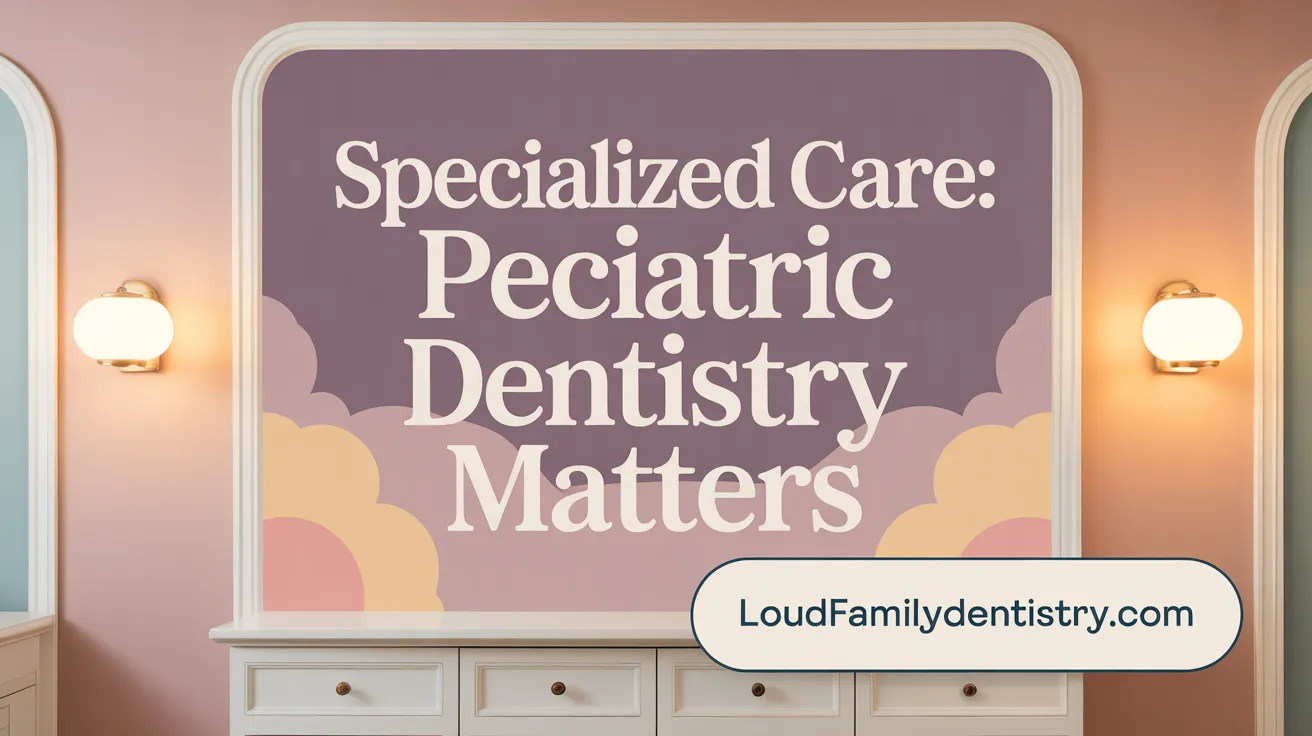
Why is specialized training important for children's dental care?
Pediatric dentists receive additional training focused on children's unique dental needs including growth, development, and behavior. This specialized education allows them to provide care that is tailored to the physical and emotional needs of children. Learn more at Kerst & Caskey Pediatric Dentistry.
How do pediatric dentists ensure patient comfort?
These dentists create a child-friendly environment with calming amenities and use behavior management techniques in pediatric dentistry like the S.A.F.E. technique for reducing dental anxiety to reduce fear and anxiety. They communicate in kid-friendly language, helping kids feel safe and relaxed. Additional tips can be found at Creating a Positive Dental Experience for Your Child.
What is developmentally appropriate care in pediatric dentistry?
Pediatric dentists know how to deliver dental treatment appropriate to a child's age and development. This includes monitoring jaw growth, managing habits like thumb sucking, and using preventive strategies such as dental sealants for children and fluoride treatments designed specifically for young patients. More information on age-appropriate care is available at Pediatric Dentistry in Shreveport, LA.
By combining specialized training, child-centered comfort strategies, and developmentally appropriate care, pediatric dentists offer superior dental care that promotes lifelong oral health from infancy through adolescence. For comprehensive pediatric dental services, visit Pediatric Dental Partners Shreveport.
85. The Role of Sealants in Preventing Back Tooth Decay

How Are Sealants Applied to Molars?
Dental sealants are thin coatings applied directly to the chewing surfaces of molars—the back teeth that are hardest to keep clean due to their grooves and pits. Typically done during a routine dental visit, the tooth surface is cleaned and dried before the sealant is painted on and then hardened with a special light. This process is quick, painless, and non-invasive. For more information on the procedure, see Dental Sealants for Children and Protecting Children's Teeth with Sealants.
Why Do Sealants Protect Difficult-to-Brush Areas?
Molars have deep crevices where food and plaque can easily accumulate, making them prone to cavities. Sealants act as a barrier by filling in these grooves, preventing bacteria and food particles from settling in hard-to-reach spots. This is especially important for children who may struggle with thorough brushing in these areas. Learn more about the importance of sealants and oral hygiene in Pediatric Dentistry in Shreveport, LA and Child-Friendly Dental Care in Shreveport.
How Effective Are Sealants in the Long Term?
Research shows dental sealants can prevent up to 80% of cavities in the treated teeth, providing protection for several years. Regular dental visits help monitor the sealants' condition and allow for reapplication if necessary, ensuring continued defense against tooth decay as children grow. For details on maintaining sealants and their benefits, see Regular Dental Visits for Children and Biannual Dental Cleanings for Kids.
| Aspect | Detail | Benefits |
|---|---|---|
| Application Method | Painted on molars, then cured | Quick, painless, child-friendly (Creating a Positive Dental Experience for Your Child |
| Target Area | Chewing surfaces with grooves | Shields hard-to-clean spots (Protecting Children's Teeth with Sealants) |
| Longevity & Maintenance | Lasts several years with checkups | Sustained cavity prevention (Fluoride Varnish Benefits |
Sealants are a proven, effective preventive measure that pediatric dentists recommend to maintain strong and healthy teeth, particularly in areas most vulnerable to decay. For comprehensive pediatric dental services and early dental care advice, visit Kerst & Caskey Pediatric Dentistry.
86. Monitoring and Managing Dental Development Through Adolescence
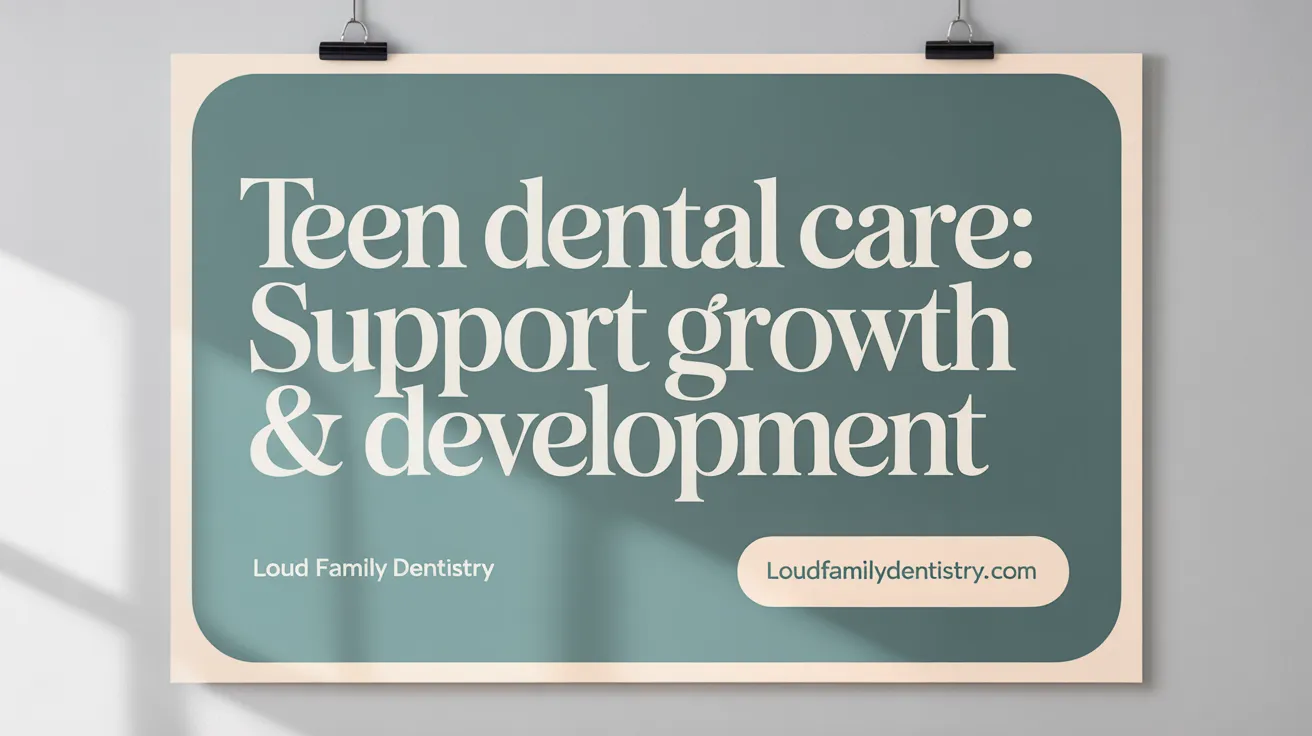
Watching eruption of permanent teeth
Permanent teeth typically start to erupt around age six and continue until about age 21. Monitoring this process helps identify any delays or abnormalities early. For expert guidance on this, consider Pediatric dentistry in Shreveport, LA.
Addressing orthodontic needs early
Early assessment of jaw and teeth alignment, often by age seven, allows timely intervention for orthodontic issues to support proper facial growth and tooth positioning. Learn more about early dental care and orthodontic checkups at Pediatric dental services in Shreveport.
Ensuring oral health continuity
Regular dental visits through adolescence maintain healthy teeth and gums, facilitate preventive treatments like fluoride and sealants, and support ongoing oral hygiene habits. For comprehensive pediatric dental services that promote healthy gums and teeth in children, visit Kerst & Caskey Pediatric Dentistry.
87. Customizing Treatment Plans Based on Child’s Individual Needs
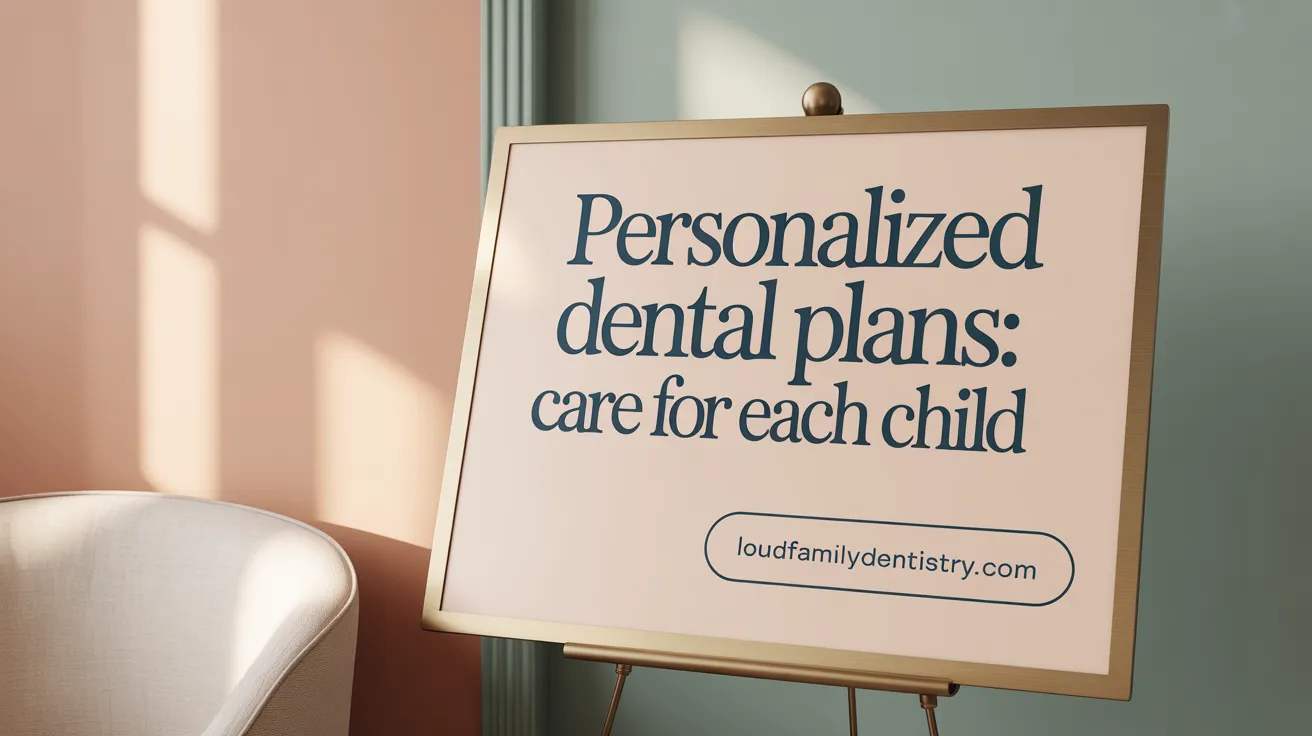
Considering Health History
Pediatric dental care begins with understanding a child's unique health history. This helps dentists anticipate potential challenges and tailor treatments safely.
Developing Age-Appropriate Care
Dentists create care routines suited to each child's age, ensuring comfort and effective prevention from infancy through adolescence. Learn more about early dental care for children.
Catering to Special Needs
Children with special health conditions receive customized dental approaches, including modified behavior management techniques in pediatric dentistry and treatment options.
This individualized care supports positive experiences and promotes lifelong oral health habits in every child. Discover how to foster positive dental experiences for children.
88. Regular Use of Mouthguards for Children in Contact Sports

Why Are Mouthguards Important for Children in Contact Sports?
Mouthguards play an essential role in preventing dental trauma during contact sports. They protect children's teeth from injuries such as fractures, displacements, and even tooth loss. For more information on the importance of mouthguards in children's dental care, visit Pediatric Dentistry in Shreveport, LA.
Types of Mouthguards Available
- Stock Mouthguards: Pre-formed and ready to wear but may not fit well.
- Boil-and-Bite Mouthguards: Can be softened in hot water and molded to fit the child’s mouth better.
- Custom-Fitted Mouthguards: Made by dental professionals to provide the best fit and protection. Learn about custom-fitted options at Kerst & Caskey Pediatric Dentistry.
Educating Children and Parents
Educating both children and their parents about the importance of mouthguards and protective equipment can encourage consistent use. Dental offices often provide guidance on selecting the right mouthguard and proper usage during practices and games. For tips on guiding your child's dental health.
Using mouthguards regularly helps safeguard children's oral health during sports activities. To learn more about maintaining healthy teeth and gums in children.
89. Importance of Laughter and Play in Dental Visits

How Does Play Reduce Stress During Dental Visits?
Laughter and play create a relaxed environment that helps calm children's fears about dental treatments. Incorporating games and playful interaction distracts them from anxiety, making visits feel less clinical. Learn more about behavior management techniques in pediatric dentistry.
How Can Play Enhance Cooperation in Pediatric Dentistry?
Playful techniques engage children, making them more willing participants in exams and cleanings. Fun activities can motivate cooperation by turning routine care into enjoyable experiences. For additional tips, see Creating a Positive Dental Experience for Your Child.
How Does Play Build Positive Memories of Dental Visits?
Positive interactions through play establish good dental associations early on. Children remember fun moments rather than discomfort, fostering lifelong healthy attitudes toward oral care. Explore Parental Role in Child's Oral Health to support your child's oral health journey.
90. Dental Emergencies in Children: Immediate Care Approaches

Treating Broken or Knocked-Out Teeth
In cases where a child's tooth is broken or knocked out, quick action is crucial. Rinse the mouth gently with warm water to clean the area. For a knocked-out tooth, if it's a permanent tooth, try to place it back in the socket if possible or keep it moist in milk or saline on the way to the dentist. Learn more from Pediatric Dentistry in Shreveport, LA.
Managing Pain and Swelling
To ease pain, use over-the-counter children’s pain relievers as directed. Applying a cold compress to the outside of the mouth can reduce swelling and discomfort. Refer to Oral Health Tips for Children for additional care recommendations.
Guidance for Parents
Parents should stay calm, contact their pediatric dentist immediately, and follow their instructions carefully. Avoid giving children sticky or hard foods, and never ignore dental injuries as early treatment can save teeth and prevent complications. For supportive pediatric dental care and expert advice, see Kerst & Caskey Pediatric Dentistry.
91. Providing Extractions and Space Maintenance When Needed

When Are Extractions Necessary in Pediatric Dentistry?
Extractions are considered when a baby tooth is severely decayed, infected, or causes crowding. Early loss may also result from trauma or extensive decay that cannot be restored. For more information on Restorative Dental Care for Kids, visit Kerst & Caskey Pediatric Dentistry.
How Does Extraction Affect Teeth Alignment?
Removing a tooth prematurely can lead to adjacent teeth shifting into the empty space, risking misalignment and future orthodontic problems. Learn about the Importance of Early Dental Visits for preventing such issues.
What Role Do Space Maintainers Play?
Space maintainers are devices placed after extraction to hold the space for the permanent tooth. They help preserve proper alignment and allow for normal jaw development. Understand more about Preventive Pediatric Dental Treatments and space maintenance.
Pediatric dentists carefully evaluate each case to decide when extraction and space maintenance are needed, ensuring long-term oral health for children. For comprehensive care, see Comprehensive Pediatric Dental Services in Shreveport.
92. Effective Communication Between Dental Staff and Parents
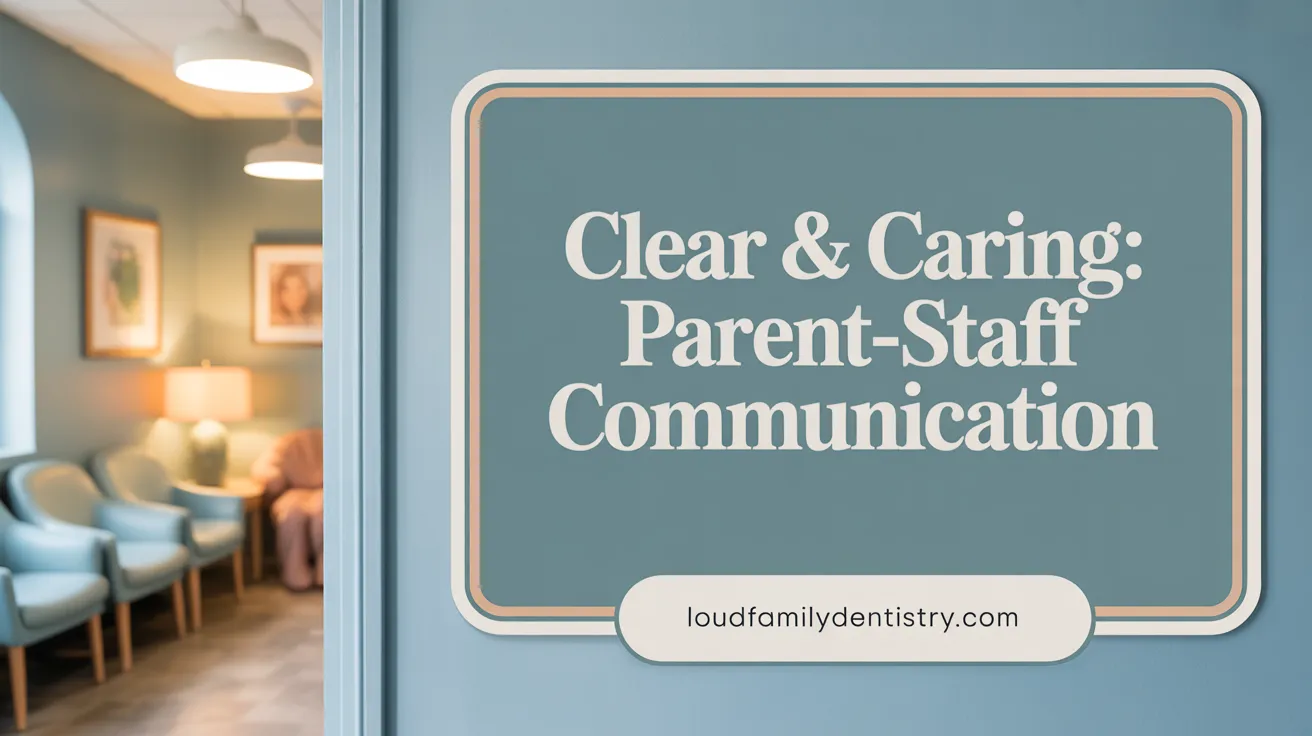
Keeping Parents Informed
Dental staff ensure parents receive clear updates about their child’s oral health, upcoming treatments, and preventive measures. This fosters trust and empowers parents to actively participate in their child’s dental care.
Educating on Home Care
Parents are guided on proper brushing techniques, diet choices, and daily oral hygiene routines. Tailored advice supports effective cavity prevention and promotes healthy habits from infancy as recommended in Oral Health Tips for Children.
Involving Parents in Treatment Plans
Dental teams actively include parents in decision-making, explaining procedures and options so they feel confident and involved. This collaboration improves outcomes and reduces children’s dental anxiety as described in Overcoming dental anxiety in children and through effective behavior management techniques in pediatric dentistry.
93. Promoting a Smoke-Free Environment to Protect Children's Oral Health

How does secondhand smoke affect children's oral health?
Secondhand smoke significantly increases the risk of cavities and gum disease in children. Harmful chemicals in tobacco smoke weaken developing teeth and gums, making them more vulnerable to decay and infections. For more detailed information on oral health tips for children and keeping your child's teeth healthy, refer to trusted resources.
What is the impact of secondhand smoke on cavity development?
Exposure to secondhand smoke disrupts normal oral bacterial balance and reduces saliva flow, fostering cavity formation. Children in smoke-filled environments have higher rates of tooth decay compared to those in smoke-free homes. Learn more about preventive dental care for infants and pediatric dentistry services for effective cavity prevention.
How can families create a protective, smoke-free environment?
- Maintain a no-smoking policy inside homes and cars.
- Avoid exposure to smokers in public areas.
- Model healthy habits by abstaining from tobacco use.
- Promote awareness about the harmful effects of smoke on children's oral health.
Fostering a smoke-free environment is a vital step in safeguarding children's oral health and supporting lifelong healthy smiles. For additional guidance, visit Kerst & Caskey Pediatric Dentistry and Oral Health Tips for Children.
94. Assessing and Managing Bad Breath in Kids

What Are Common Causes of Bad Breath in Children?
Bad breath in kids often arises from poor oral hygiene, dry mouth, or buildup of food particles. Sometimes, it may result from dental issues like cavities or gum disease. Other causes include sinus infections, tonsillitis, or digestive problems. For more information on managing common dental problems in kids, visit Pediatric Dentistry in Shreveport, LA.
How Can Oral Hygiene Be Improved to Reduce Bad Breath?
Encouraging regular brushing, flossing, and tongue cleaning helps remove bacteria causing bad breath. Ensure children brush twice daily with fluoride toothpaste and floss once teeth touch. Drinking water and limiting sugary snacks support fresher breath. Helpful tips on oral hygiene routines can be found at Oral Health Tips for Children.
When Should You Seek Treatment for Your Child's Bad Breath?
If bad breath persists despite good oral care, or is accompanied by pain or swelling, consult a pediatric dentist. They can check for infections, cavities, or other underlying issues requiring professional treatment. Learn more about comprehensive pediatric dental services at Kerst & Caskey Pediatric Dentistry.
95. Identifying and Treating Canker Sores in Children

Recognizing Symptoms
Canker sores in children usually appear as small, shallow ulcers on the soft tissues inside the mouth. They can cause discomfort, especially when eating or talking, and may present as round or oval lesions with a white or yellow center and a red border.
Soothing Remedies
To soothe canker sores, parents can help children rinse their mouths with warm saltwater or use over-the-counter topical gels designed for children. Avoiding acidic or spicy foods can also prevent irritation and support healing. For additional oral health tips for children, consider consulting resources focused on children's preventive care.
Professional Care Options
If canker sores are large, persist longer than two weeks, or cause severe pain, visiting a pediatric dentist office is recommended. The dentist can provide treatments such as prescription mouth rinses or topical medications to ease discomfort and speed recovery. For trusted Pediatric Dental Care in Shreveport, see comprehensive pediatric dental services.
96. Addressing Teeth Grinding (Bruxism) in Pediatric Patients

What Causes Teeth Grinding in Children and What Are the Symptoms?
Teeth grinding, or bruxism, in children can be caused by stress, anxiety, misaligned teeth, or discomfort from growing teeth. Symptoms often include worn tooth surfaces, tooth sensitivity, headaches, or jaw pain. For more on common dental problems in children, see Pediatric Dentistry in Shreveport, LA.
How Can Teeth Grinding Be Managed in Pediatric Patients?
Management techniques include stress reduction, counseling for anxiety, and monitoring by a pediatric dentist. In some cases, customized night guards may be recommended to protect the teeth during sleep. Learn more about behavior management techniques in pediatric dentistry and dental anxiety strategies for kids.
How Can Damage From Grinding Be Prevented?
Preventing damage involves early detection, regular dental checkups, and the use of protective devices like mouthguards. Encouraging good sleep habits and addressing any underlying medical or emotional issues also helps minimize bruxism effects. For comprehensive pediatric dental services that include preventive care and mouthguards, visit Kerst & Caskey Pediatric Dentistry or explore options at Superior Dentistry Pediatric Services.
97. Implementing Digital Imaging and X-Rays Safely

When Is Imaging Needed in Pediatric Dentistry?
Dental imaging is used to monitor tooth development, detect cavities or abnormalities, and plan treatments. Early X-rays can help assess jaw growth and the eruption of permanent teeth. For more information, see Pediatric Dentistry in Shreveport, LA.
How Often Should X-Rays Be Taken Based on Age?
Imaging frequency depends on risk and age. Typically, initial X-rays are taken around ages 2-3 or when permanent teeth begin to emerge, with annual images thereafter as needed to track development and detect issues early. Learn more about Regular dental visits for kids.
What Radiation Safety Measures Are Used?
Modern digital X-rays emit very low radiation. Pediatric dentists use protective lead aprons and collars, limit exposure time, and apply the ALARA principle (As Low As Reasonably Achievable) to minimize radiation while ensuring diagnostic quality. See guidelines from Comprehensive Pediatric Dental Services in Shreveport.
98. Encouraging Positive Social Emotions About Dental Care

How can we reduce stigma around children’s dental visits?
Creating a friendly and fun environment helps children feel safe and reduces fear. Practices like Capitol Hill Pediatric Dentistry use kid-friendly language and activities, such as explaining tools and giving small rewards, to make visits enjoyable and stigma-free. Additionally, implementing behavior management techniques in pediatric dentistry can further ease children's fears and promote a calm, positive experience.
How do we celebrate progress in children’s oral health?
Recognizing children’s cooperation and milestones with praise and small prizes encourages positive feelings about dental care. Methods like the S.A.F.E. technique employed at Smile Valley Pediatric Dentistry help build confidence during visits by engaging children and reducing anxiety using behavior management techniques in pediatric dentistry.
What strategies maintain children's motivation for dental care?
Transforming oral hygiene into fun routines—like brushing with music or choosing colorful toothbrushes—keeps children engaged. Consistent, supportive dental visits and parental involvement reinforce good habits and long-term motivation. For especially anxious children, safe sedation options such as the use of nitrous oxide in pediatric dentistry can also be considered to facilitate positive dental experiences.
These approaches foster a positive social atmosphere around dentistry, helping children embrace oral care as a healthy, empowering experience rather than a source of anxiety.
99. Maintaining Good Oral Health Through Adolescence
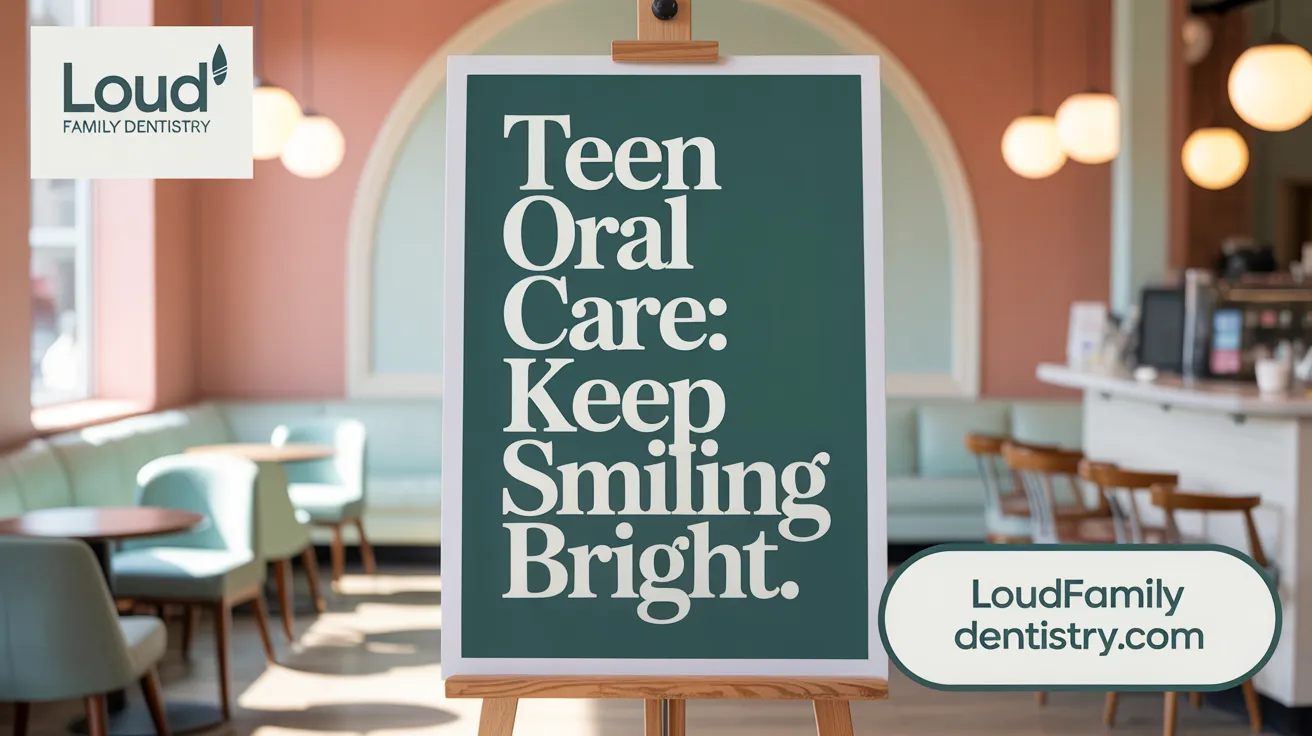
Continuing Preventive Care
Adolescents should maintain regular dental visits every six months for cleanings, fluoride treatments, and sealants to keep teeth healthy and cavity-free. Preventive care remains vital as permanent teeth fully emerge and face new risks. For detailed guidance, visit Pediatric Dentistry in Shreveport, LA, Shreveport Pediatric Dental Care, and Pediatric Dental Services in Louisiana.
Addressing Orthodontics
Early orthodontic screening by age 7 helps monitor jaw growth and tooth alignment. Teen years may require braces or retainers to correct misalignments, preventing future complications and promoting proper oral function. Learn more about Pediatric dental services in Shreveport.
Establishing Independence in Hygiene
Teens should take responsibility for brushing twice daily with fluoride toothpaste and flossing daily. Encouraging good oral habits and balanced nutrition supports long-term dental health as parental supervision lessens. Helpful tips can be found in Oral Health Tips for Children, Keeping Your Child's Teeth Healthy, and Good Oral Health Starts Early.
100. Comprehensive Family Dental Care Including Pediatric Services

Integration of Child and Adult Care
Family dental practices often provide seamless care for both children and adults, simplifying appointments and fostering family-wide oral health. For specialized Pediatric Dentistry in Shreveport, LA, early dental care for infants and children is emphasized to promote lifelong oral health.
Building Lifelong Relationships
By treating patients from infancy through adulthood, dentists build trusting relationships that encourage consistent preventive care and early problem detection. Establishing trust is vital and supported by techniques such as behavior management techniques in pediatric dentistry, which engage children positively and reduce anxiety to foster a comfortable dental experience.
Consistent Care Philosophy
Using a unified approach tailored to all ages promotes healthy habits and ensures that oral care messages are reinforced throughout a patient's lifetime. Resources like Importance of Regular Dental Checkups for Children and Oral Health Tips for Children highlight the significance of early dental visits, biannual cleanings, and parental involvement in supporting a healthy dental routine from infancy onward.
101. The Impact of Community-Oriented Pediatric Dental Care

Outreach and Education
Community-focused pediatric dental clinics play a vital role in educating families about oral health. They provide tailored advice on brushing, diet, fluoride use, and the importance of regular dental visits to promote healthy habits from infancy. Learn more about Oral Health Tips for Children and Parental Role in Child's Oral Health.
Improving Local Children's Oral Health
By offering accessible services such as fluoride treatments, sealants, and early checkups, these clinics help reduce cavities—a common childhood chronic disease. Preventive care and early interventions foster stronger teeth and prevent decay in young patients. Explore the benefits of Dental Sealants for Cavity Prevention and Preventive Pediatric Dental Treatments.
Building Trust in the Community
Friendly, child-centered environments and engaging techniques help reduce dental anxiety. Experienced pediatric dentists work closely with families, encouraging involvement to build confidence and a positive attitude toward dental care that lasts a lifetime. Discover strategies on behavior management techniques in pediatric dentistry and creating a Safe and Comfortable Environment for Children.
Is Loud Family Dental suitable for patients of all ages?
Comprehensive Age Range
Loud Family Dental welcomes patients from young children to senior citizens, addressing the dental needs of every stage of life.
Services Tailored for Children to Seniors
The clinic offers specialized care including pediatric dentistry to help children establish good oral habits, as well as orthodontics and geriatric care designed for adults and seniors.
Community Focus and Patient Education
Emphasizing a friendly, community-oriented environment, Loud Family Dental prioritizes patient education and preventive care to ensure a comfortable, positive experience for the entire family. For creating a positive dental experience and reducing fear in children, resources such as Creating a Positive Dental Experience for Your Child provide valuable tips. Furthermore, behavior management techniques in pediatric dentistry like The S.A.F.E. technique for reducing dental anxiety support making visits enjoyable and stress-free.
What types of dental services does Loud Family Dental offer?
Pediatric Preventive Dentistry
Loud Family Dental provides specialized pediatric services to ensure children's teeth stay healthy from their first tooth. They emphasize gentle care, promoting regular checkups, cleanings, fluoride treatments, and dental sealants for cavity prevention and support early oral health habits.
Cosmetic and Restorative Options
The practice offers a variety of cosmetic treatments to enhance smiles, including teeth whitening and veneers. Restorative procedures such as crowns and fillings for children help preserve dental health and function, addressing decay and damage effectively.
Emergency Dental Care
Urgent dental issues are addressed promptly with compassionate care to alleviate pain and protect oral health. This ensures patients receive timely relief and treatment when unexpected problems arise.
Family Dental Focus
Led by Dr. Rodrick Loud, the clinic serves patients of all ages, creating a welcoming environment that fosters trust and comfort. Their comprehensive services support the dental needs of the entire family, promoting lifelong oral health.
How does Loud Family Dental ensure patient comfort during dental treatments?
Welcoming Environment
Loud Family Dental creates a friendly and inviting atmosphere that helps patients, especially children, feel relaxed and comfortable from the start. For similar Child-Friendly Dental Care in Shreveport or to learn about Creating a Positive Dental Experience for Your Child, these environments prioritize patient comfort and anxiety reduction.
Personalized Attention
The team listens carefully to each patient's concerns and explains all procedures to reduce fear and build trust. Techniques such as the behavior management techniques in pediatric dentistry and the S.A.F.E. technique for reducing dental anxiety help in Engaging children in dental care.
Advanced Technology
Modern dental tools and methods are used to make treatments efficient, painless, and less intimidating. Utilizing state-of-the-art pediatric dental technology allows for better care and more comfortable experiences.
Gentle and Compassionate Staff
Trained staff provide kind, patient-centered care with gentle techniques to ease anxiety during visits. Resources on Overcoming dental anxiety in children emphasize the importance of compassionate pediatric dental care and adjusting approaches to reduce anxiety.
Together, these approaches ensure a positive, comfortable experience for every patient at Loud Family Dental.
What makes Loud Family Dental community-oriented?
What makes Loud Family Dental community-oriented?
Loud Family Dental stands out through active participation in local health events and oral care education programs, helping the Shreveport community better understand Importance of Regular Dental Checkups for Children.
The clinic ensures accessibility by offering affordable, flexible scheduling options tailored to diverse patient needs, making care convenient for families.
By fostering personalized relationships, Loud Family Dental creates a welcoming, supportive environment where patients feel valued and cared for, similar to the Comforting Dental Environment for Children.
This deep community commitment strengthens trust and promotes lifelong healthy habits among patients, echoing messages from Oral Health Tips for Children and Creating a Positive Dental Experience for Your Child.
Summary: Building Positive Pediatric Dental Experiences
Early Dental Visits Importance
Starting dental care as soon as the first tooth appears, or by the child's first birthday, is crucial for early detection and prevention of dental issues. Regular visits every six months help children acclimate to the dental environment and support lifelong healthy habits.
Creating Child-Friendly Environments
Pediatric dental clinics design welcoming, fun, and comforting spaces to reduce anxiety. Techniques like the S.A.F.E. method engage children with tools and positive reinforcement. Emphasizing fun, clear communication, and gentle care ensures a positive dental experience.
Involving Parents and Community
Parents play a vital role by guiding oral hygiene routines and reinforcing healthy habits. Community efforts like fluoridated water and accessible clinics support children's oral health, providing preventive treatments like fluoride varnish and dental sealants.
Ongoing Preventive Care
Preventive measures include twice-yearly cleanings, fluoride treatments, and sealants to protect teeth from cavities. Monitoring growth and providing restorative care when needed ensure children maintain strong, healthy teeth for life.
